
List of United States Senators from Virginia
Encyclopedia
Virginia
ratified the Constitution on June 25, 1788. Its Senate seats were declared vacant in March 1861, due to its secession
from the Union
, but senators representing its western counties continued to sit until March 1863. Virginia's Senate seats were again filled from January 1870.
Virginia
The Commonwealth of Virginia , is a U.S. state on the Atlantic Coast of the Southern United States. Virginia is nicknamed the "Old Dominion" and sometimes the "Mother of Presidents" after the eight U.S. presidents born there...
ratified the Constitution on June 25, 1788. Its Senate seats were declared vacant in March 1861, due to its secession
Secession
Secession is the act of withdrawing from an organization, union, or especially a political entity. Threats of secession also can be a strategy for achieving more limited goals.-Secession theory:...
from the Union
Union (American Civil War)
During the American Civil War, the Union was a name used to refer to the federal government of the United States, which was supported by the twenty free states and five border slave states. It was opposed by 11 southern slave states that had declared a secession to join together to form the...
, but senators representing its western counties continued to sit until March 1863. Virginia's Senate seats were again filled from January 1870.
Class 1
| # | Senator | Party | Years | Congress | Term | Electoral history |
|---|---|---|---|---|---|---|
| 1 | William Grayson William Grayson William Grayson was a soldier, lawyer, and statesman from Virginia. He was one of the first two U.S. Senators from Virginia, and belonged to the Anti-Federalist faction.-Biography:... |
Anti- Administration Anti-Administration Party (United States) Anti-Administration "Party" was the informal faction comprising the opponents of the policies of Treasury Secretary Alexander Hamilton in the first term of President George Washington. This was not an organized political party but an unorganized faction... |
March 4, 1789 – March 12, 1790 |
1 1st United States Congress -House of Representatives:During this congress, five House seats were added for North Carolina and one House seat was added for Rhode Island when they ratified the Constitution.-Senate:* President: John Adams * President pro tempore: John Langdon... |
1 | Elected in 1789 Died |
| Vacant | March 12, 1790 – March 31, 1790 |
|||||
| 2 | 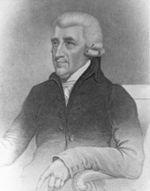 John Walker John Walker |
Pro- Administration Pro-Administration Party (United States) Pro-Administration "Party" is a term by historians to describe the supporters of the policies of George Washington's administration — especially Treasury Secretary Alexander Hamilton's financial policies — prior to the formation of the Federalist and Democratic-Republican Parties.Almost the entire... |
March 31, 1790 – November 9, 1790 |
Appointed to continue Grayson's term Retired when successor elected |
||
| 3 | 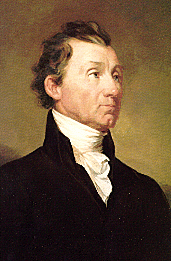 James Monroe James MonroeJames Monroe James Monroe was the fifth President of the United States . Monroe was the last president who was a Founding Father of the United States, and the last president from the Virginia dynasty and the Republican Generation... |
Anti- Administration Anti-Administration Party (United States) Anti-Administration "Party" was the informal faction comprising the opponents of the policies of Treasury Secretary Alexander Hamilton in the first term of President George Washington. This was not an organized political party but an unorganized faction... |
November 9, 1790 – March 27, 1794 |
1 1st United States Congress -House of Representatives:During this congress, five House seats were added for North Carolina and one House seat was added for Rhode Island when they ratified the Constitution.-Senate:* President: John Adams * President pro tempore: John Langdon... (Continued) |
Elected to finish Grayson's term | |
| 2 2nd United States Congress -House of Representatives:During this congress, two new House seats were added for each of the new states of Vermont and Kentucky. -Leadership:-Senate:*President: John Adams *President pro tempore:** Richard Henry Lee... |
2 | Re-elected in 1791 Resigned to become U.S. Minister Plenipotentiary to France |
||||
| 3 3rd United States Congress The Third United States Congress was a meeting of the legislative branch of the United States federal government, consisting of the United States Senate and the United States House of Representatives... |
||||||
| Vacant | March 27, 1794 – November 18, 1794 |
|||||
| 4 | 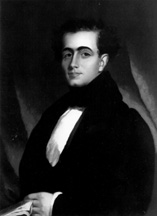 Stevens T. Mason Stevens T. MasonStevens Thomson Mason (Virginia) Stevens Thomson Mason was a Colonel in the Continental Army during the Revolutionary War, a member of the Virginia state legislature and a Republican U.S. Senator from Virginia .-Early life and military career:... |
Democratic- Republican |
November 18, 1794 – May 10, 1803 |
3 3rd United States Congress The Third United States Congress was a meeting of the legislative branch of the United States federal government, consisting of the United States Senate and the United States House of Representatives... (Continued) |
Elected to finish Monroe's term | |
| 4 4th United States Congress -House of Representatives:- Senate :* President: John Adams * President pro tempore:** Henry Tazewell , first elected December 7, 1795** Samuel Livermore , first elected May 6, 1796** William Bingham , first elected February 16, 1797... |
||||||
| 5 5th United States Congress The Fifth United States Congress was a meeting of the legislative branch of the United States federal government, consisting of the United States Senate and the United States House of Representatives... |
3 | Re-elected in 1797 | ||||
| 6 6th United States Congress The Sixth United States Congress was a meeting of the legislative branch of the United States federal government, consisting of the United States Senate and the United States House of Representatives. It met at Congress Hall in Philadelphia, Pennsylvania and in Washington, D.C. from March 4, 1799... |
||||||
| 7 7th United States Congress - House of Representatives :-Senate:* President: Aaron Burr * President pro tempore:** Abraham Baldwin , first elected December 7, 1801** Stephen R. Bradley , first elected December 14, 1802-House of Representatives:... |
||||||
| 8 8th United States Congress - Senate :* President: Aaron Burr * President pro tempore: John Brown , October 17, 1803 – February 26, 1804** Jesse Franklin , March 10, 1804 – November 4, 1804** Joseph Anderson , January 15, 1805 – December 1, 1805- House of Representatives :... |
4 | Re-elected in 1803 Died |
||||
| Vacant | May 10, 1803 – June 4, 1803 |
|||||
| 5 | 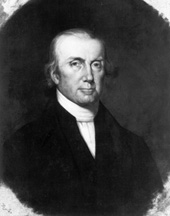 John Taylor of Caroline John Taylor of CarolineJohn Taylor of Caroline John Taylor usually called John Taylor of Caroline was a politician and writer. He served in the Virginia House of Delegates and in the United States Senate . He wrote several books on politics and agriculture... |
Democratic- Republican |
June 4, 1803 – December 7, 1803 |
Appointed to continue Mason's term Retired when successor elected |
||
| 6 | Abraham B. Venable Abraham B. Venable Abraham Bedford Venable was a representative and senator from Virginia. He was the uncle of congressman Abraham Watkins Venable.... |
Democratic- Republican |
December 7, 1803 – June 7, 1804 |
Elected to finish Mason's term Resigned to become president of Bank of Virginia Bank of Virginia -Past Bank Presidents or Presidents of the Richmond Branch:*Abraham B. Venable*Dr. John Brockenbrough... |
||
| Vacant | June 7, 1804 – August 11, 1804 |
|||||
| 7 | William B. Giles William Branch Giles William Branch Giles ; the name is pronounced jyles) was an American statesman, long-term Senator from Virginia, and the 24th Governor of Virginia... |
Democratic- Republican |
August 11, 1804 – December 3, 1804 |
Appointed to continue Venable's term Resigned when elected to finish Wilson Nicholas Wilson Cary Nicholas Wilson Cary Nicholas was an American politician who served in the U.S. Senate from 1799 to 1804 and was the 19th Governor of Virginia from 1814 to 1816.... 's Class 2 term. |
||
| 8 | Andrew Moore | Democratic- Republican |
December 4, 1804 – March 4, 1809 |
8 8th United States Congress - Senate :* President: Aaron Burr * President pro tempore: John Brown , October 17, 1803 – February 26, 1804** Jesse Franklin , March 10, 1804 – November 4, 1804** Joseph Anderson , January 15, 1805 – December 1, 1805- House of Representatives :... (Continued) |
Elected to finish Venable's term. | |
| 9 9th United States Congress - Senate :* President: George Clinton * President pro tempore: Samuel Smith - House of Representatives :* Speaker: Nathaniel Macon -Members:This list is arranged by chamber, then by state... |
||||||
| 10 10th United States Congress - House of Representatives :- Senate :*President: George Clinton *President pro tempore: Samuel Smith , elected April 16, 1808** Stephen R. Bradley , elected December 28, 1808** John Milledge , elected January 30, 1809... |
||||||
| 9 | Richard Brent Richard Brent (Virginia) Richard Brent was an American planter, lawyer, and politician from Stafford County, Virginia. He represented Virginia in both the U.S. House and the U.S. Senate.-External links:*... |
Democratic- Republican |
March 4, 1809 – December 30, 1814 |
11 11th United States Congress - House of Representatives :-Leadership:- Senate :* President: George Clinton * President pro tempore:** John Milledge ** Andrew Gregg , elected June 26, 1809** John Gaillard , elected February 28, 1810... |
5 | Died |
| 12 12th United States Congress - House of Representatives :During this congress, one new House seat was added for the new state of Louisiana.- Senate :*President: George Clinton *President pro tempore: William H. Crawford -House of Representatives:*Speaker: Henry Clay... |
||||||
| 13 13th United States Congress - Senate :* President: Elbridge Gerry , until November 23, 1814, thereafter vacant.* President pro tempore: Joseph B. Varnum , December 6, 1813 – February 3, 1814** John Gaillard , elected November 25, 1814- House of Representatives :... |
||||||
| Vacant | December 30, 1814 – January 2, 1815 |
|||||
| 10 |  James Barbour James BarbourJames Barbour James Barbour was an American lawyer, amember and speaker of the Virginia House of Delegates, the 18th Governor of Virginia, the first Governor to reside in the current Virginia Governor's Mansion, a U.S. Senator from 1814–1825, and the United States Secretary of War from 1825-1828.Barbour was a... |
Democratic- Republican |
January 2, 1815 – March 7, 1825 |
13 13th United States Congress - Senate :* President: Elbridge Gerry , until November 23, 1814, thereafter vacant.* President pro tempore: Joseph B. Varnum , December 6, 1813 – February 3, 1814** John Gaillard , elected November 25, 1814- House of Representatives :... (Continued) |
Elected to finish Brent's term | |
| 14 14th United States Congress - Senate :* President: Vacant* President pro tempore: John Gaillard of South Carolina, first elected December 4, 1815- House of Representatives :* Speaker: Henry Clay of Kentucky-Members:This list is arranged by chamber, then by state... |
6 | Re-elected in 1815 | ||||
| 15 15th United States Congress -Leadership:- Senate :* President: Daniel D. Tompkins * President pro tempore:** John Gaillard , elected March 4, 1817** James Barbour , elected February 15, 1819- House of Representatives :*Speaker: Henry Clay -Members:... |
||||||
| 16 16th United States Congress -House of Representatives:During this congress, one House seat was added for the new state of Alabama and one seat was reapportioned from Massachusetts to the new state of Maine. For the beginning of the next congress, six more seats from Massachusetts would be reapportioned to... |
||||||
| 17 17th United States Congress The Seventeenth United States Congress was a meeting of the legislative branch of the United States federal government, consisting of the United States Senate and the United States House of Representatives. It met in Washington, D.C. from March 4, 1821 to March 3, 1823, during the fifth and sixth... |
7 | Re-elected in 1821 Resigned to become U.S. Secretary of War |
||||
| Crawford Republican |
18 18th United States Congress The Eighteenth United States Congress was a meeting of the legislative branch of the United States federal government, consisting of the United States Senate and the United States House of Representatives. It met in Washington, D.C. from March 4, 1823 to March 3, 1825, during the seventh and eighth... |
|||||
| Jacksonian | 19 19th United States Congress -House of Representatives:-Leadership:- Senate :* President: John C. Calhoun * President pro tempore: John Gaillard , until December 4, 1825** Nathaniel Macon , from May 20, 1826- House of Representatives :* Speaker: John W. Taylor -Members:... |
|||||
| Vacant | March 7, 1825 – December 26, 1825 |
|||||
| 11 | 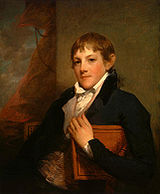 John Randolph John RandolphJohn Randolph of Roanoke John Randolph , known as John Randolph of Roanoke, was a planter and a Congressman from Virginia, serving in the House of Representatives , the Senate , and also as Minister to Russia... |
Jacksonian | December 26, 1825 – March 4, 1827 |
19 19th United States Congress -House of Representatives:-Leadership:- Senate :* President: John C. Calhoun * President pro tempore: John Gaillard , until December 4, 1825** Nathaniel Macon , from May 20, 1826- House of Representatives :* Speaker: John W. Taylor -Members:... (Continued) |
Appointed to continue Barbour's term Lost election to next term |
|
| 12 | 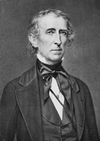 John Tyler John TylerJohn Tyler John Tyler was the tenth President of the United States . A native of Virginia, Tyler served as a state legislator, governor, U.S. representative, and U.S. senator before being elected Vice President . He was the first to succeed to the office of President following the death of a predecessor... |
Jacksonian | March 4, 1827 – February 29, 1836 |
20 20th United States Congress -House of Representatives:-Leadership:- Senate :* President: John C. Calhoun * President pro tempore: Samuel Smith - House of Representatives :* Speaker: Andrew Stevenson -Members:This list is arranged by chamber, then by state... |
8 | Elected in 1827 |
| 21 21st United States Congress -House of Representatives:-Leadership:- Senate :* President: John C. Calhoun * President pro tempore: Samuel Smith - House of Representatives :* Speaker: Andrew Stevenson -Members:This list is arranged by chamber, then by state... |
||||||
| 22 22nd United States Congress -House of Representatives:-Leadership:- Senate :* President:** John C. Calhoun , resigned December 28, 1832, thereafter vacant.* President pro tempore:** Samuel Smith , first elected December 5, 1831** Littleton W... |
||||||
| Anti- Jackson |
23 23rd United States Congress -House of Representatives:For the beginning of this congress, the size of the House was increased from 213 seats to 240 seats, following the 1830 United States Census .- Leadership :- Senate :* President: Martin Van Buren... |
9 | Re-elected in 1833 Resigned |
|||
| 24 24th United States Congress -House of Representatives:During this congress one House seat was added for each of the new states of Arkansas and Michigan.-Leadership:- Senate :* President: Martin Van Buren * President pro tempore: William R. King - House of Representatives :... |
||||||
| Vacant | February 29, 1836 – March 4, 1836 |
|||||
| 13 | 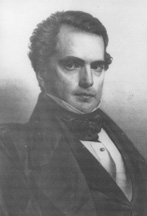 William C. Rives William C. RivesWilliam Cabell Rives William Cabell Rives was an American lawyer, politician and diplomat from Albemarle County, Virginia. He represented Virginia as a Jackson Democrat in both the U.S. House and Senate and also served as the U.S. minister to France.... |
Jacksonian | March 4, 1836 – March 3, 1839 |
24 24th United States Congress -House of Representatives:During this congress one House seat was added for each of the new states of Arkansas and Michigan.-Leadership:- Senate :* President: Martin Van Buren * President pro tempore: William R. King - House of Representatives :... (Continued) |
Elected to finish Tyler's term Legislature failed to elect in 1839 |
|
| Democratic Democratic Party (United States) The Democratic Party is one of two major contemporary political parties in the United States, along with the Republican Party. The party's socially liberal and progressive platform is largely considered center-left in the U.S. political spectrum. The party has the lengthiest record of continuous... |
25 25th United States Congress -House of Representatives:-Leadership:- Senate :* President: Richard Mentor Johnson * President pro tempore: William R. King - House of Representatives :* Speaker: James K. Polk -Members:This list is arranged by chamber, then by state... |
|||||
| Vacant | March 3, 1839 – January 18, 1841 |
26 26th United States Congress -House of Representatives:- Leadership :- Senate :*President: Richard M. Johnson *President pro tempore: William R. King - House of Representatives :*Speaker: Robert M.T. Hunter -Members:This list is arranged by chamber, then by state... |
10 | |||
 William C. Rives William C. RivesWilliam Cabell Rives William Cabell Rives was an American lawyer, politician and diplomat from Albemarle County, Virginia. He represented Virginia as a Jackson Democrat in both the U.S. House and Senate and also served as the U.S. minister to France.... |
Whig Whig Party (United States) The Whig Party was a political party of the United States during the era of Jacksonian democracy. Considered integral to the Second Party System and operating from the early 1830s to the mid-1850s, the party was formed in opposition to the policies of President Andrew Jackson and his Democratic... |
January 18, 1841 – March 3, 1845 |
26 26th United States Congress -House of Representatives:- Leadership :- Senate :*President: Richard M. Johnson *President pro tempore: William R. King - House of Representatives :*Speaker: Robert M.T. Hunter -Members:This list is arranged by chamber, then by state... (Continued) |
Re-elected late in 1841 |
||
| 27 27th United States Congress The Twenty-seventh United States Congress was a meeting of the legislative branch of the United States federal government, consisting of the United States Senate and the United States House of Representatives. It met in Washington, D.C. from March 4, 1841 to March 3, 1843, during the one-month... |
||||||
| 28 28th United States Congress -House of Representatives:Following the 1840 United States Census, Congress reapportioned the House to include 223 seats . During this congress, one House seat was added for the new state of Florida .- Senate :*President: Vacant... |
||||||
| Vacant | March 4, 1845 – December 3, 1845 |
29 29th United States Congress -House of Representatives:During this congress, two House seats were added for each of the new states of Texas and Iowa.-Leadership:-Senate:* President: George M. Dallas * President pro tempore: Willie P. Mangum... |
11 | |||
| 14 |  Isaac S. Pennybacker Isaac S. PennybackerIsaac S. Pennybacker Isaac Samuels Pennybacker was an American lawyer, federal judge, and politician from Harrisonburg, Virginia.- Early life and education :Pennybacker was born at Pine Forge, near New Market, Shenandoah County, Virginia.... |
Democratic Democratic Party (United States) The Democratic Party is one of two major contemporary political parties in the United States, along with the Republican Party. The party's socially liberal and progressive platform is largely considered center-left in the U.S. political spectrum. The party has the lengthiest record of continuous... |
December 3, 1845 – January 12, 1847 |
Elected to finish the vacancy Died |
||
| Vacant | January 12, 1847 – January 21, 1847 |
|||||
| 15 | 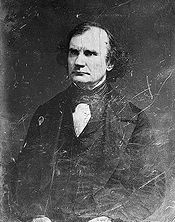 James M. Mason James M. Mason |
Democratic Democratic Party (United States) The Democratic Party is one of two major contemporary political parties in the United States, along with the Republican Party. The party's socially liberal and progressive platform is largely considered center-left in the U.S. political spectrum. The party has the lengthiest record of continuous... |
January 21, 1847 – July 11, 1861 |
29 29th United States Congress -House of Representatives:During this congress, two House seats were added for each of the new states of Texas and Iowa.-Leadership:-Senate:* President: George M. Dallas * President pro tempore: Willie P. Mangum... (Continued) |
Elected to finish Pennybacker's term | |
| 30 30th United States Congress The Thirtieth United States Congress was a meeting of the legislative branch of the United States federal government, consisting of the United States Senate and the United States House of Representatives. It met in Washington, D.C. from March 4, 1847 to March 3, 1849, during the last two years of... |
||||||
| 31 31st United States Congress The Thirty-first United States Congress was a meeting of the legislative branch of the United States federal government, consisting of the United States Senate and the United States House of Representatives. It met in Washington, D.C. from March 4, 1849 to March 3, 1851, during the last 17 months... |
||||||
| 32 32nd United States Congress The Thirty-second United States Congress was a meeting of the legislative branch of the United States federal government, consisting of the United States Senate and the United States House of Representatives. It met in Washington, D.C. from March 4, 1851 to March 3, 1853, during the third and... |
12 | Re-elected in 1850 United States Senate elections, 1850 The United States Senate election of 1850 was an election which had the Democratic Party gain one seat in the United States Senate.As this election was prior to ratification of the seventeenth amendment, Senators were chosen by State legislatures.... |
||||
| 33 33rd United States Congress The Thirty-third United States Congress was a meeting of the legislative branch of the United States federal government, consisting of the United States Senate and the United States House of Representatives. It met in Washington, D.C. from March 4, 1853 to March 3, 1855, during the first two years... |
||||||
| 34 34th United States Congress The Thirty-fourth United States Congress was a meeting of the legislative branch of the United States federal government, consisting of the United States Senate and the United States House of Representatives. It met in Washington, D.C. from March 4, 1855 to March 4, 1857, during the last two years... |
||||||
| 35 35th United States Congress The 35th United States Congress was a meeting of the legislative branch of the United States federal government, consisting of the United States Senate and the United States House of Representatives. It met in Washington, D.C. from March 4, 1857 to March 3, 1859, during the first two years of James... |
13 | Re-elected in 1856 United States Senate elections, 1856 The United States Senate election of 1856 was an election which had the young Republican Party assume its position as one of the United States's two main political parties.... Expelled |
||||
| 36 36th United States Congress The Thirty-sixth United States Congress was a meeting of the legislative branch of the United States federal government, consisting of the United States Senate and the United States House of Representatives. It met in Washington, D.C. from March 4, 1859 to March 4, 1861, during the third and fourth... |
||||||
| 37 37th United States Congress The Thirty-seventh United States Congress was a meeting of the legislative branch of the United States federal government, consisting of the United States Senate and the United States House of Representatives. It met in Washington, D.C. from March 4, 1861 to March 4, 1863, during the first two... |
||||||
| Vacant | July 11, 1861 – July 13, 1861 |
|||||
| 16 | 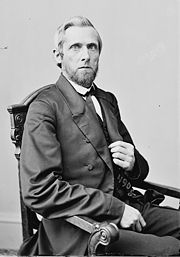 Waitman T. Willey Waitman T. WilleyWaitman T. Willey Waitman Thomas Willey was an American lawyer and politician from Morgantown, West Virginia. He represented both the states of Virginia and West Virginia in the United States Senate and was one of West Virginia's first two Senators.Willey was born in 1811, in a log cabin near the present day... |
Unionist Unionist Party (United States) The Union Party was a fusion political party conceived by Republicans in 1861 to combine people of all political affiliations into a single movement committed to the preservation of the Union and to war. Republicans wanted to project an image of wartime nonpartisanship and they also expected to... |
July 13, 1861 – March 3, 1863 |
37 37th United States Congress The Thirty-seventh United States Congress was a meeting of the legislative branch of the United States federal government, consisting of the United States Senate and the United States House of Representatives. It met in Washington, D.C. from March 4, 1861 to March 4, 1863, during the first two... (Continued) |
Elected to finish Mason's term Resigned to become U.S. Senator from West Virginia |
|
| 17 | Lemuel J. Bowden Lemuel J. Bowden Lemuel Jackson Bowden was an American lawyer and politician from Williamsburg, Virginia.Bowden served as mayor of Williamsburg, Virginia from 1862 to 1863 and represented Virginia in the United States Senate in 1863 as a member of the Unionist Party.Bowden died of smallpox while in office at... |
Unionist Unionist Party (United States) The Union Party was a fusion political party conceived by Republicans in 1861 to combine people of all political affiliations into a single movement committed to the preservation of the Union and to war. Republicans wanted to project an image of wartime nonpartisanship and they also expected to... |
March 4, 1863 – January 2, 1864 |
38 38th United States Congress -House of Representatives:Before this Congress, the 1860 United States Census and resulting reapportionment changed the size of the House to 241 members... |
14 | Elected in 1863 Died |
| Vacant | January 2, 1864 – January 26, 1870 |
38 38th United States Congress -House of Representatives:Before this Congress, the 1860 United States Census and resulting reapportionment changed the size of the House to 241 members... (Continued) |
Civil War and Reconstruction Joseph Segar Joseph Segar Joseph Eggleston Segar was a U.S. Representative from Virginia.-Early life:Born in King William County, Virginia, Segar attended the common schools. He studied law, was admitted to the bar and practiced law... (U Unionist Party (United States) The Union Party was a fusion political party conceived by Republicans in 1861 to combine people of all political affiliations into a single movement committed to the preservation of the Union and to war. Republicans wanted to project an image of wartime nonpartisanship and they also expected to... ) presented his credentials on February 17, 1865, but was not seated |
|||
| 39 39th United States Congress The Thirty-ninth United States Congress was a meeting of the legislative branch of the United States federal government, consisting of the United States Senate and the United States House of Representatives. It met in Washington, D.C. from March 4, 1865 to March 4, 1867, during the first month of... |
||||||
| 40 40th United States Congress The Fortieth United States Congress was a meeting of the legislative branch of the United States federal government, consisting of the United States Senate and the United States House of Representatives. It met in Washington, D.C. from March 4, 1867 to March 4, 1869, during the third and fourth... |
||||||
| 41 41st United States Congress -House of Representatives:- Senate :* President : Schuyler Colfax* President pro tempore: Henry B. Anthony - House of Representatives :* Speaker: James G. Blaine -Members:This list is arranged by chamber, then by state... |
15 | |||||
| 18 | 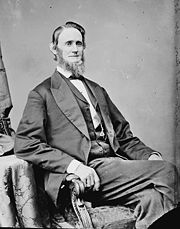 John F. Lewis John F. LewisJohn F. Lewis John Francis Lewis was an American plantation owner and politician from Rockingham County, Virginia. He served two terms as Lieutenant Governor of Virginia and represented Virginia as a Republican in the United States Senate during the Reconstruction period after the Civil War.John F... |
Republican Republican Party (United States) The Republican Party is one of the two major contemporary political parties in the United States, along with the Democratic Party. Founded by anti-slavery expansion activists in 1854, it is often called the GOP . The party's platform generally reflects American conservatism in the U.S... |
January 26, 1870 – March 4, 1875 |
41 41st United States Congress -House of Representatives:- Senate :* President : Schuyler Colfax* President pro tempore: Henry B. Anthony - House of Representatives :* Speaker: James G. Blaine -Members:This list is arranged by chamber, then by state... (Continued) |
Elected to finish the vacancy Retired |
|
| 42 42nd United States Congress The Forty-second United States Congress was a meeting of the legislative branch of the United States federal government, consisting of the United States Senate and the United States House of Representatives. It met in Washington, D.C. from March 4, 1871 to March 3, 1873, during the third and fourth... |
||||||
| 43 43rd United States Congress The Forty-third United States Congress was a meeting of the legislative branch of the United States federal government, consisting of the United States Senate and the United States House of Representatives. It met in Washington, D.C. from March 4, 1873 to March 4, 1875, during the fifth and sixth... |
||||||
| 19 |  Robert E. Withers Robert E. WithersRobert E. Withers Robert Enoch Withers was an American physician, military officer, newspaperman, politician and diplomat. He represented Virginia in the United States Senate and served as U.S. Consul in Hong Kong.-Biography:... |
Democratic Democratic Party (United States) The Democratic Party is one of two major contemporary political parties in the United States, along with the Republican Party. The party's socially liberal and progressive platform is largely considered center-left in the U.S. political spectrum. The party has the lengthiest record of continuous... |
March 4, 1875 – March 4, 1881 |
44 44th United States Congress The Forty-fourth United States Congress was a meeting of the legislative branch of the United States federal government, consisting of the United States Senate and the United States House of Representatives. It met in Washington, D.C. from March 4, 1875 to March 4, 1877, during the seventh and... |
16 | Elected in 1875 Lost re-election |
| 45 45th United States Congress -House of Representatives:-Leadership:-Senate:*President: William A. Wheeler *President pro tempore: Thomas W. Ferry -House of Representatives:*Speaker: Samuel J. Randall -Members:This list is arranged by chamber, then by state... |
||||||
| 46 46th United States Congress The Forty-sixth United States Congress was a meeting of the legislative branch of the United States federal government, consisting of the United States Senate and the United States House of Representatives. It met in Washington, D.C. from March 4, 1879 to March 4, 1881, during the last two years of... |
||||||
| 20 | 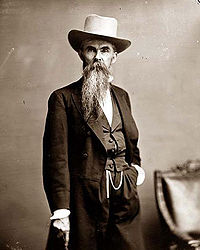 William Mahone William MahoneWilliam Mahone William Mahone was a civil engineer, teacher, soldier, railroad executive, and a member of the Virginia General Assembly and U.S. Congress. Small of stature, he was nicknamed "Little Billy".... |
Readjuster Readjuster Party The Readjuster Party was a political coalition formed in Virginia in the late 1870s during the turbulent period following the American Civil War. Readjusters aspired "to break the power of wealth and established privilege" and to promote public education, a program which attracted biracial support.... |
March 4, 1881 – March 4, 1887 |
47 47th United States Congress The Forty-seventh United States Congress was a meeting of the legislative branch of the United States federal government, consisting of the United States Senate and the United States House of Representatives. It met in Washington, D.C. from March 4, 1881 to March 4, 1883, during the administration... |
17 | Elected in 1881 Lost re-election |
| 48 48th United States Congress The Forty-eighth United States Congress was a meeting of the legislative branch of the United States federal government, consisting of the United States Senate and the United States House of Representatives. It met in Washington, D.C. from March 4, 1883 to March 4, 1885, during the last two years... |
||||||
| 49 49th United States Congress The Forty-ninth United States Congress was a meeting of the legislative branch of the United States federal government, consisting of the United States Senate and the United States House of Representatives. It met in Washington, D.C. from March 4, 1885 to March 4, 1887, during the first two years... |
||||||
| 22 |  John W. Daniel John W. DanielJohn W. Daniel John Warwick Daniel was an American lawyer, author, and Democratic politician from Lynchburg, Virginia. He served in the Virginia House of Delegates and represented Virginia in both the U.S. House and then five terms in the Senate... |
Democratic Democratic Party (United States) The Democratic Party is one of two major contemporary political parties in the United States, along with the Republican Party. The party's socially liberal and progressive platform is largely considered center-left in the U.S. political spectrum. The party has the lengthiest record of continuous... |
March 4, 1887 – June 29, 1910 |
50 50th United States Congress The Fiftieth United States Congress was a meeting of the legislative branch of the United States federal government, consisting of the United States Senate and the United States House of Representatives. It met in Washington, D.C. from March 4, 1887 to March 4, 1889, during the third and fourth... |
18 | Elected in 1887 |
| 51 51st United States Congress The Fifty-first United States Congress, referred to by some critics as the Billion Dollar Congress, was a meeting of the legislative branch of the United States federal government, consisting of the United States Senate and the United States House of Representatives. It met in Washington, D.C... |
||||||
| 52 52nd United States Congress The Fifty-second United States Congress was a meeting of the legislative branch of the United States federal government, consisting of the United States Senate and the United States House of Representatives. It met in Washington, D.C... |
||||||
| 53 53rd United States Congress The Fifty-third United States Congress was a meeting of the legislative branch of the United States federal government, consisting of the United States Senate and the United States House of Representatives. It met in Washington, D.C. from March 4, 1893 to March 4, 1895, during the fifth and sixth... |
19 | Re-elected in 1893 | ||||
| 54 54th United States Congress - House of Representatives :-Leadership:- Senate :* President: Adlai E. Stevenson * President pro tempore: William P. Frye - Majority leadership :* Republican Conference Chairman: John Sherman- Minority leadership :... |
||||||
| 55 55th United States Congress -House of Representatives:* Republican: 206 * Democratic: 124* Populist: 22* Silver Republican: 3* Silver: 1* Independent Republican: 1TOTAL members: 357-Leadership:-Senate:* President: Garret Hobart * President pro tempore: William P... |
||||||
| 56 56th United States Congress -House of Representatives:- Leadership :- Senate :* President: Garret Hobart , until November 21, 1899 , vacant thereafter.* President pro tempore: William P. Frye * Democratic Caucus Chairman: James K. Jones... |
20 | Re-elected in 1899 | ||||
| 57 57th United States Congress -House of Representatives:*Democratic: 151*Republican: 200 *Populist: 5*Silver : 1TOTAL members: 357-Leadership:-Senate:* President: Theodore Roosevelt , until September 14, 1901, vacant thereafter.... |
||||||
| 58 58th United States Congress - House of Representatives :* Republican : 209 * Democratic : 176* Silver Republican : 1TOTAL members: 386-Senate:* President: Vacant* President pro tempore: William P. Frye -Members:... |
||||||
| 59 59th United States Congress The Fifty-ninth United States Congress was a meeting of the legislative branch of the United States federal government, composed of the United States Senate and the United States House of Representatives. It met in Washington, DC from March 4, 1905 to March 4, 1907, during the fifth and sixth... |
21 | Re-elected in 1904 United States Senate elections, 1904 The United States Senate election of 1904 was an election which coincided with President Theodore Roosevelt's landslide re-election, and which had the Republican Party gain one seat in the United States Senate.... Re-elected in 1910, but died before that term began |
||||
| 60 60th United States Congress The Sixtieth United States Congress was a meeting of the legislative branch of the United States federal government, composed of the United States Senate and the United States House of Representatives. It met in Washington, DC from March 4, 1907 to March 4, 1909, during the last two years of... |
||||||
| 61 61st United States Congress The Sixty-first United States Congress was a meeting of the legislative branch of the United States federal government, composed of the United States Senate and the United States House of Representatives. It met in Washington, DC from March 4, 1909 to March 4, 1911, during the first two years of... |
||||||
| Vacant | June 29, 1910 – August 1, 1910 |
|||||
| 22 | 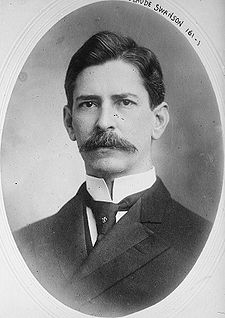 Claude A. Swanson Claude A. SwansonClaude A. Swanson Claude Augustus Swanson was an American lawyer and Democratic Party politician from Virginia.He served seven terms in the U.S. House of Representatives, from 1893 until 1906, was the 45th Governor of Virginia from 1906 until 1910, and represented Virginia as a United States Senator from 1910 until... |
Democratic Democratic Party (United States) The Democratic Party is one of two major contemporary political parties in the United States, along with the Republican Party. The party's socially liberal and progressive platform is largely considered center-left in the U.S. political spectrum. The party has the lengthiest record of continuous... |
August 1, 1910 – March 3, 1933 |
61 61st United States Congress The Sixty-first United States Congress was a meeting of the legislative branch of the United States federal government, composed of the United States Senate and the United States House of Representatives. It met in Washington, DC from March 4, 1909 to March 4, 1911, during the first two years of... (Continued) |
Appointed to finish Daniel's last term | |
| 62 62nd United States Congress - House of Representatives :* Democratic : 230 * Republican : 162* Socialist : 1* Independent : 1TOTAL members: 394-Senate:* President: James S... |
22 | Re-appointed on February 28, 1911 to begin Daniel's next term Elected to finish Daniel's next term |
||||
| 63 63rd United States Congress - House of Representatives:*Democratic : 291 *Republican : 134*Progressive : 9*Independent : 1TOTAL members: 435-Senate:*President of the Senate: Thomas R. Marshall*President pro tempore: James P. Clarke-Senate:... |
||||||
| 64 64th United States Congress The Sixty-fourth United States Congress was a meeting of the legislative branch of the United States federal government, composed of the United States Senate and the United States House of Representatives. It met in Washington, DC from March 4, 1915 to March 4, 1917, during the third and fourth... |
||||||
| 65 65th United States Congress The Sixty-fifth United States Congress was a meeting of the legislative branch of the United States federal government, composed of the United States Senate and the United States House of Representatives. It met in Washington, DC from March 4, 1917 to March 4, 1919, during the fourth and fifth... |
23 | Re-elected in 1916 | ||||
| 66 66th United States Congress The Sixty-sixth United States Congress was a meeting of the legislative branch of the United States federal government, comprising the United States Senate and the United States House of Representatives. It met in Washington, DC from March 4, 1919 to March 4, 1921, during the last two years of... |
||||||
| 67 67th United States Congress The Sixty-seventh United States Congress was a meeting of the legislative branch of the United States federal government, consisting of the United States Senate and the United States House of Representatives. It met in Washington, D.C. from March 4, 1921 to March 4, 1923, during the first two years... |
||||||
| 68 68th United States Congress The Sixty-eighth United States Congress was a meeting of the legislative branch of the United States federal government, consisting of the United States Senate and the United States House of Representatives. It met in Washington, D.C. from March 4, 1923 to March 4, 1925, during the last months of... |
24 | Re-elected in 1922 | ||||
| 69 69th United States Congress The Sixty-ninth United States Congress was a meeting of the legislative branch of the United States federal government, consisting of the United States Senate and the United States House of Representatives. It met in Washington, D.C. from March 4, 1925 to March 4, 1927, during the third and fourth... |
||||||
| 70 70th United States Congress The Seventieth United States Congress was a meeting of the legislative branch of the United States federal government, consisting of the United States Senate and the United States House of Representatives. It met in Washington, D.C. from March 4, 1927 to March 3, 1929, during the last two years of... |
||||||
| 71 71st United States Congress The Seventy-first United States Congress was a meeting of the legislative branch of the United States federal government, consisting of the United States Senate and the United States House of Representatives. It met in Washington, D.C. from March 4, 1929 to March 4, 1931, during the first two years... |
25 | Re-elected in 1928 Resigned |
||||
| 72 72nd United States Congress The Seventy-second United States Congress was a meeting of the legislative branch of the United States federal government, consisting of the United States Senate and the United States House of Representatives. It met in Washington, D.C. from March 4, 1931 to March 4, 1933, during the last two years... |
||||||
| 23 |  Harry F. Byrd Harry F. ByrdHarry F. Byrd Harry Flood Byrd, Sr. of Berryville in Clarke County, Virginia, was an American newspaper publisher, farmer and politician. He was a descendant of one of the First Families of Virginia... |
Democratic Democratic Party (United States) The Democratic Party is one of two major contemporary political parties in the United States, along with the Republican Party. The party's socially liberal and progressive platform is largely considered center-left in the U.S. political spectrum. The party has the lengthiest record of continuous... |
March 4, 1933 – November 10, 1965 |
73 73rd United States Congress The Seventy-third United States Congress was a meeting of the legislative branch of the United States federal government, composed of the United States Senate and the United States House of Representatives. It met in Washington, DC from March 4, 1933 to January 3, 1935, during the first two years... |
Appointed to continue Swanson's term Elected to finish Swanson's term |
|
| 74 74th United States Congress -House:Also 2 Delegates, 3 Resident Commissioners-Senate:*President of the Senate: John N. Garner *President pro tempore: Key Pittman -Majority leadership:*Majority leader: Joseph T. Robinson... |
26 | Re-elected in 1934 | ||||
| 75 75th United States Congress The Seventy-fifth United States Congress was a meeting of the legislative branch of the United States federal government, composed of the United States Senate and the United States House of Representatives. It met in Washington, DC from January 3, 1937 to January 3, 1939, during the first two years... |
||||||
| 76 76th United States Congress The Seventy-sixth United States Congress was a meeting of the legislative branch of the United States federal government, composed of the United States Senate and the United States House of Representatives. It met in Washington, DC from January 3, 1939 to January 3, 1941, during the seventh and... |
||||||
| 77 77th United States Congress -Major events:* December 7, 1941: Attack on Pearl Harbor* December 8, 1941: Joint Session of Congress met to hear President Roosevelt deliver his "Day of Infamy" speech... |
27 | Re-elected in 1940 | ||||
| 78 78th United States Congress The Seventy-eighth United States Congress was a meeting of the legislative branch of the United States federal government, composed of the United States Senate and the United States House of Representatives. It met in Washington, DC from January 3, 1943 to January 3, 1945, during the last two years... |
||||||
| 79 79th United States Congress The Seventy-ninth United States Congress was a meeting of the legislative branch of the United States federal government, composed of the United States Senate and the United States House of Representatives. It met in Washington, DC from January 3, 1945 to January 3, 1947, during the last months of... |
||||||
| 80 80th United States Congress The Eightieth United States Congress was a meeting of the legislative branch of the United States federal government, composed of the United States Senate and the United States House of Representatives. It met in Washington, DC from January 3, 1947 to January 3, 1949, during the third and fourth... |
28 | Re-elected in 1946 | ||||
| 81 81st United States Congress The Eighty-first United States Congress was a meeting of the legislative branch of the United States federal government, composed of the United States Senate and the United States House of Representatives... |
||||||
| 82 82nd United States Congress The Eighty-second United States Congress was a meeting of the legislative branch of the United States federal government, composed of the United States Senate and the United States House of Representatives. It met in Washington, DC from January 3, 1951 to January 3, 1953, during the last two years... |
||||||
| 83 83rd United States Congress The Eighty-third United States Congress was a meeting of the legislative branch of the United States federal government, composed of the United States Senate and the United States House of Representatives. It met in Washington, DC from January 3, 1953 to January 3, 1955, during the first two years... |
29 | Re-elected in 1952 | ||||
| 84 84th United States Congress The Eighty-fourth United States Congress was a meeting of the legislative branch of the United States federal government, composed of the United States Senate and the United States House of Representatives. It met in Washington, DC from January 3, 1955 to January 3, 1957, during the third and... |
||||||
| 85 85th United States Congress The Eighty-fifth United States Congress was a meeting of the legislative branch of the United States federal government, composed of the United States Senate and the United States House of Representatives. It met in Washington, DC from January 3, 1957 to January 3, 1959, during the fifth and sixth... |
||||||
| 86 86th United States Congress The Eighty-sixth United States Congress was a meeting of the legislative branch of the United States federal government, composed of the United States Senate and the United States House of Representatives. It met in Washington, DC from January 3, 1959 to January 3, 1961, during the last two years... |
30 | Re-elected in 1958 | ||||
| 87 87th United States Congress -House of Representatives :-Senate:* President: Richard Nixon , until January 20, 1961** Lyndon Johnson , from January 20, 1961* President pro tempore: Carl Hayden -House of Representatives:... |
||||||
| 88 88th United States Congress The Eighty-eighth United States Congress was a meeting of the legislative branch of the United States federal government, composed of the United States Senate and the United States House of Representatives. It met in Washington, DC from January 3, 1963 to January 3, 1965, during the last year of... |
||||||
| 89 89th United States Congress -House of Representatives:- Senate :* President of the Senate: Hubert Humphrey , starting January 20, 1965* President pro tempore: Carl Hayden - Majority leadership :* Majority Leader and Democratic Conference Chairman: Mike Mansfield... |
31 | Re-elected in 1964 Resigned for health reasons |
||||
| Vacant | November 10, 1965 – November 12, 1965 |
|||||
| 24 |  Harry F. Byrd, Jr. Harry F. Byrd, Jr.Harry F. Byrd, Jr. Harry Flood Byrd, Jr. is a retired American politician. He represented Virginia in the United States Senate from 1965 to 1983. He is most notable for leaving the Democratic Party in 1970 and becoming an Independent, although he continued to caucus with the Democrats. He is the son of Harry F.... |
Democratic Democratic Party (United States) The Democratic Party is one of two major contemporary political parties in the United States, along with the Republican Party. The party's socially liberal and progressive platform is largely considered center-left in the U.S. political spectrum. The party has the lengthiest record of continuous... |
November 12, 1965 – January 3, 1983 |
89 89th United States Congress -House of Representatives:- Senate :* President of the Senate: Hubert Humphrey , starting January 20, 1965* President pro tempore: Carl Hayden - Majority leadership :* Majority Leader and Democratic Conference Chairman: Mike Mansfield... (Continued) |
Appointed to continue his father's term Elected to finish his father's term |
|
| 90 90th United States Congress The Ninetieth United States Congress was a meeting of the legislative branch of the United States federal government, composed of the United States Senate and the United States House of Representatives. It met in Washington, DC from January 3, 1967 to January 3, 1969, during the last two years of... |
||||||
| 91 91st United States Congress The Ninety-first United States Congress was a meeting of the legislative branch of the United States federal government, composed of the United States Senate and the United States House of Representatives. It met in Washington, DC from January 3, 1969 to January 3, 1971, during the first two years... |
||||||
| Independent | 92 92nd United States Congress The Ninety-second United States Congress was a meeting of the legislative branch of the United States federal government, composed of the United States Senate and the United States House of Representatives... |
32 | Re-elected in 1970 | |||
| 93 93rd United States Congress The Ninety-third United States Congress was a meeting of the legislative branch of the United States federal government, composed of the United States Senate and the United States House of Representatives. It met in Washington, DC from January 3, 1973 to January 3, 1975, during the end of Richard... |
||||||
| 94 94th United States Congress The Ninety-fourth United States Congress was a meeting of the legislative branch of the United States federal government, composed of the United States Senate and the United States House of Representatives. It met in Washington, DC from January 3, 1975 to January 3, 1977, during the administration... |
||||||
| 95 95th United States Congress The Ninety-fifth United States Congress was a meeting of the legislative branch of the United States federal government, composed of the United States Senate and the United States House of Representatives. It met in Washington, DC from January 3, 1977 to January 3, 1979, during the first two years... |
33 | Re-elected in 1976 Retired |
||||
| 96 96th United States Congress The Ninety-sixth United States Congress was a meeting of the legislative branch of the United States federal government, composed of the United States Senate and the United States House of Representatives. It met in Washington, DC from January 3, 1979 to January 3, 1981, during the last two years... |
||||||
| 97 97th United States Congress The Ninety-seventh United States Congress was a meeting of the legislative branch of the United States federal government, composed of the United States Senate and the United States House of Representatives. It met in Washington, DC from January 3, 1981 to January 3, 1983, during the final weeks of... |
||||||
| 25 | Paul S. Trible, Jr. Paul S. Trible, Jr. Paul Seward Trible, Jr. is a former Representative and Senator in the United States Congress from Virginia and current president of Christopher Newport University. Trible graduated from Hampden-Sydney College in 1968 where he received his Bachelor of Arts in History... |
Republican Republican Party (United States) The Republican Party is one of the two major contemporary political parties in the United States, along with the Democratic Party. Founded by anti-slavery expansion activists in 1854, it is often called the GOP . The party's platform generally reflects American conservatism in the U.S... |
January 3, 1983 – January 3, 1989 |
98 98th United States Congress The Ninety-eighth United States Congress was a meeting of the legislative branch of the United States federal government, composed of the United States Senate and the United States House of Representatives. It met in Washington, DC from January 3, 1983 to January 3, 1985, during the third and... |
34 | Elected in 1982 United States Senate elections, 1982 The United States Senate election of November 2, 1982 was an election for the United States Senate following the Republican gains in 1980. Party balance was unchanged following the election. Incumbents Howard Cannon of Nevada and Harrison Schmitt of New Mexico lost seats to the opposite party, the... Retired |
| 99 99th United States Congress The Ninety-ninth United States Congress was a meeting of the legislative branch of the United States federal government, composed of the United States Senate and the United States House of Representatives. It met in Washington, DC from January 3, 1985 to January 3, 1987, during the fifth and sixth... |
||||||
| 100 100th United States Congress -House of Representatives:- Senate :* President: George H.W. Bush * President pro tempore: John Stennis - Majority leadership :* Majority Leader, Democratic Conference Chairman, and Democratic Policy Committee Chairman: Robert Byrd... |
||||||
| 26 | 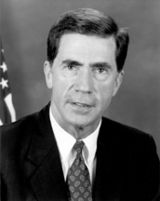 Chuck Robb Chuck RobbChuck Robb Charles Spittal "Chuck" Robb is an American politician. He served as the 64th Governor of Virginia from 1982 to 1986, and as a United States senator from 1989 until 2001. In 2004, he chaired the Iraq Intelligence Commission.-Early life:... |
Democratic Democratic Party (United States) The Democratic Party is one of two major contemporary political parties in the United States, along with the Republican Party. The party's socially liberal and progressive platform is largely considered center-left in the U.S. political spectrum. The party has the lengthiest record of continuous... |
January 3, 1989 – January 3, 2001 |
101 101st United States Congress The One Hundred First United States Congress was a meeting of the legislative branch of the United States federal government, composed of the United States Senate and the United States House of Representatives. It met in Washington, DC from January 3, 1989 to January 3, 1991, during the first two... |
35 | Elected in 1988 United States Senate elections, 1988 The United States Senate election, of November 8, 1988 was an election for the United States Senate in which, in spite of the Republican victory by George H. W. Bush in the presidential election, the Republicans suffered a net loss of one seat in the Senate... |
| 102 102nd United States Congress -House of Representatives:- Senate :* President:Dan Quayle * President pro tempore: Robert Byrd - Majority leadership :* Majority Leader: George Mitchell* Majority Whip: Wendell Ford- Minority leadership :... |
||||||
| 103 103rd United States Congress - House of Representatives :- Leadership :- Senate :* President: Dan Quayle , until January 20, 1993** Al Gore , from January 20, 1993* President pro tempore: Robert Byrd - Majority leadership :* Majority Leader: George Mitchell... |
||||||
| 104 104th United States Congress The One Hundred Fourth United States Congress was a meeting of the legislative branch of the United States federal government, composed of the United States Senate and the United States House of Representatives. It met in Washington, DC from January 3, 1995 to January 3, 1997, during the third and... |
36 | Re-elected in 1994 United States Senate election in Virginia, 1994 The 1994 United States Senate election in Virginia was held on November 7, 1994. Incumbent Democratic U.S. Senator Chuck Robb won re-election to a second term, despite the fact that it was a tough year in 1994 because former centrist Republican Marshall Coleman ran as an independent and spoiled... Lost re-election |
||||
| 105 105th United States Congress The One Hundred Fifth United States Congress was a meeting of the legislative branch of the United States federal government, composed of the United States Senate and the United States House of Representatives. It met in Washington, DC from January 3, 1997 to January 3, 1999, during the fifth and... |
||||||
| 106 106th United States Congress The One Hundred Sixth United States Congress was a meeting of the legislative branch of the United States federal government, composed of the United States Senate and the United States House of Representatives. It met in Washington, DC from January 3, 1999 to January 3, 2001, during the last two... |
||||||
| 27 | 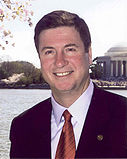 George Allen George AllenGeorge Allen (U.S. politician) George Felix Allen is a former United States Senator from the Commonwealth of Virginia, and the son of former NFL head coach George Allen. Allen served Virginia in the state legislature, as the 67th Governor, and in both bodies of the U.S. Congress, winning election to the Senate in 2000... |
Republican Republican Party (United States) The Republican Party is one of the two major contemporary political parties in the United States, along with the Democratic Party. Founded by anti-slavery expansion activists in 1854, it is often called the GOP . The party's platform generally reflects American conservatism in the U.S... |
January 3, 2001 – January 3, 2007 |
107 107th United States Congress The One Hundred Seventh United States Congress was a meeting of the legislative branch of the United States federal government, composed of the United States Senate and the United States House of Representatives. It met in Washington, D.C. from January 3, 2001 to January 3, 2003, during the final... |
37 | Elected in 2000 United States Senate election in Virginia, 2000 The 2000 United States Senate election in Virginia was held on November 7, 2000. Incumbent Democratic U.S. Senator Chuck Robb decided to seek re-election to a third term, but was defeated by Republican nominee George Allen. -Democratic:... Lost re-election |
| 108 108th United States Congress The One Hundred Eighth United States Congress was the legislative branch of the United States federal government, composed of the United States Senate and the United States House of Representatives from January 3, 2003 to January 3, 2005, during the third and fourth years of George W. Bush's... |
||||||
| 109 109th United States Congress The One Hundred Ninth United States Congress was the legislative branch of the United States, composed of the United States Senate and the United States House of Representatives, from January 3, 2005 to January 3, 2007, during the fifth and sixth years of George W. Bush's presidency. House members... |
||||||
| 28 | 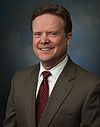 Jim Webb Jim WebbJim Webb James Henry "Jim" Webb, Jr. is the senior United States Senator from Virginia. He is also an author and a former Secretary of the Navy. He is a member of the Democratic Party.... |
Democratic Democratic Party (United States) The Democratic Party is one of two major contemporary political parties in the United States, along with the Republican Party. The party's socially liberal and progressive platform is largely considered center-left in the U.S. political spectrum. The party has the lengthiest record of continuous... |
January 3, 2007– Present |
110 110th United States Congress The One Hundred Tenth United States Congress was the meeting of the legislative branch of the United States federal government, between January 3, 2007, and January 3, 2009, during the last two years of the second term of President George W. Bush. It was composed of the Senate and the House of... |
38 | Elected in 2006 Intends to retire |
| 111 111th United States Congress The One Hundred Eleventh United States Congress was the meeting of the legislative branch of the United States federal government from January 3, 2009 until January 3, 2011. It began during the last two weeks of the George W. Bush administration, with the remainder spanning the first two years of... |
||||||
| 112 112th United States Congress The One Hundred Twelfth United States Congress is the current meeting of the legislative branch of the United States federal government, composed of the United States Senate and the United States House of Representatives. It convened in Washington, D.C. on January 3, 2011, and will end on January... |
||||||
| # | Senator | Party | Years | Congress | Term | Electoral history |
Class 2
| # | Senator | Party | Years | Congress | Term | Electoral history |
|---|---|---|---|---|---|---|
| 1 |  Richard H. Lee Richard H. LeeRichard Henry Lee Richard Henry Lee was an American statesman from Virginia best known for the motion in the Second Continental Congress calling for the colonies' independence from Great Britain. He was a signatory to the Articles of Confederation and his famous resolution of June 1776 led to the United States... |
Anti- Administration Anti-Administration Party (United States) Anti-Administration "Party" was the informal faction comprising the opponents of the policies of Treasury Secretary Alexander Hamilton in the first term of President George Washington. This was not an organized political party but an unorganized faction... |
March 4, 1789 – October 8, 1792 |
1 1st United States Congress -House of Representatives:During this congress, five House seats were added for North Carolina and one House seat was added for Rhode Island when they ratified the Constitution.-Senate:* President: John Adams * President pro tempore: John Langdon... |
1 | Elected in 1789 Resigned |
| 2 2nd United States Congress -House of Representatives:During this congress, two new House seats were added for each of the new states of Vermont and Kentucky. -Leadership:-Senate:*President: John Adams *President pro tempore:** Richard Henry Lee... |
||||||
| Vacant | October 8, 1792 – October 18, 1792 |
|||||
| 2 |  John Taylor John TaylorJohn Taylor of Caroline John Taylor usually called John Taylor of Caroline was a politician and writer. He served in the Virginia House of Delegates and in the United States Senate . He wrote several books on politics and agriculture... |
Anti- Administration Anti-Administration Party (United States) Anti-Administration "Party" was the informal faction comprising the opponents of the policies of Treasury Secretary Alexander Hamilton in the first term of President George Washington. This was not an organized political party but an unorganized faction... |
October 18, 1792 – May 11, 1794 |
2 2nd United States Congress -House of Representatives:During this congress, two new House seats were added for each of the new states of Vermont and Kentucky. -Leadership:-Senate:*President: John Adams *President pro tempore:** Richard Henry Lee... (Continued) |
Elected to finish Lee's term | |
| 3 3rd United States Congress The Third United States Congress was a meeting of the legislative branch of the United States federal government, consisting of the United States Senate and the United States House of Representatives... |
2 | Re-elected in 1793 Resigned |
||||
| Vacant | May 11, 1794 – December 29, 1794 |
|||||
| 3 |  Henry Tazewell Henry TazewellHenry Tazewell Henry Tazewell was an American politician who was instrumental in the early government of the U.S. state of Virginia. He was born in Brunswick County, Virginia. He served as the President pro tempore of the United States Senate in 1795.He was the father of Littleton Tazewell... |
Anti- Administration Anti-Administration Party (United States) Anti-Administration "Party" was the informal faction comprising the opponents of the policies of Treasury Secretary Alexander Hamilton in the first term of President George Washington. This was not an organized political party but an unorganized faction... |
December 29, 1794 – January 24, 1799 |
3 3rd United States Congress The Third United States Congress was a meeting of the legislative branch of the United States federal government, consisting of the United States Senate and the United States House of Representatives... (Continued) |
Elected to finish Taylor's term Re-elected in 1798 United States Senate elections, 1798 The United States Senate election of 1798 was an election for the United States Senate, occurring during the middle of President John Adams's administration, which had no net change in political control of the United States Senate.... , but died before new term began |
|
| Democratic- Republican |
4 4th United States Congress -House of Representatives:- Senate :* President: John Adams * President pro tempore:** Henry Tazewell , first elected December 7, 1795** Samuel Livermore , first elected May 6, 1796** William Bingham , first elected February 16, 1797... |
|||||
| 5 5th United States Congress The Fifth United States Congress was a meeting of the legislative branch of the United States federal government, consisting of the United States Senate and the United States House of Representatives... |
||||||
| Vacant | January 24, 1799 – December 5, 1799 |
5 5th United States Congress The Fifth United States Congress was a meeting of the legislative branch of the United States federal government, consisting of the United States Senate and the United States House of Representatives... (Continued) |
||||
| 6 6th United States Congress The Sixth United States Congress was a meeting of the legislative branch of the United States federal government, consisting of the United States Senate and the United States House of Representatives. It met at Congress Hall in Philadelphia, Pennsylvania and in Washington, D.C. from March 4, 1799... |
3 | |||||
| 4 | Wilson C. Nicholas Wilson Cary Nicholas Wilson Cary Nicholas was an American politician who served in the U.S. Senate from 1799 to 1804 and was the 19th Governor of Virginia from 1814 to 1816.... |
Democratic- Republican |
December 5, 1799 – May 22, 1804 |
7 7th United States Congress - House of Representatives :-Senate:* President: Aaron Burr * President pro tempore:** Abraham Baldwin , first elected December 7, 1801** Stephen R. Bradley , first elected December 14, 1802-House of Representatives:... |
Elected to finish Tazewell's term Resigned to become collector of the port of Norfolk |
|
| 8 8th United States Congress - Senate :* President: Aaron Burr * President pro tempore: John Brown , October 17, 1803 – February 26, 1804** Jesse Franklin , March 10, 1804 – November 4, 1804** Joseph Anderson , January 15, 1805 – December 1, 1805- House of Representatives :... |
||||||
| Vacant | May 22, 1804 – August 11, 1804 |
|||||
| 5 | Andrew Moore | Democratic- Republican |
August 11, 1804 – December 3, 1804 |
Appointed to continue Nicholas's term Resigned when elected to finish Abraham B. Venable Abraham B. Venable Abraham Bedford Venable was a representative and senator from Virginia. He was the uncle of congressman Abraham Watkins Venable.... 's Class 1 term |
||
| 6 | William B. Giles William Branch Giles William Branch Giles ; the name is pronounced jyles) was an American statesman, long-term Senator from Virginia, and the 24th Governor of Virginia... |
Democratic- Republican |
December 4, 1804 – March 3, 1815 |
8 8th United States Congress - Senate :* President: Aaron Burr * President pro tempore: John Brown , October 17, 1803 – February 26, 1804** Jesse Franklin , March 10, 1804 – November 4, 1804** Joseph Anderson , January 15, 1805 – December 1, 1805- House of Representatives :... (Continued) |
Elected to finish Nicholas's term | |
| 9 9th United States Congress - Senate :* President: George Clinton * President pro tempore: Samuel Smith - House of Representatives :* Speaker: Nathaniel Macon -Members:This list is arranged by chamber, then by state... |
4 | Re-elected in 1804 United States Senate elections, 1804 The United States Senate election of 1804 was an election which expanded the Democratic-Republican Party's overwhelming control over the United States Senate.... |
||||
| 10 10th United States Congress - House of Representatives :- Senate :*President: George Clinton *President pro tempore: Samuel Smith , elected April 16, 1808** Stephen R. Bradley , elected December 28, 1808** John Milledge , elected January 30, 1809... |
||||||
| 11 11th United States Congress - House of Representatives :-Leadership:- Senate :* President: George Clinton * President pro tempore:** John Milledge ** Andrew Gregg , elected June 26, 1809** John Gaillard , elected February 28, 1810... |
||||||
| 12 12th United States Congress - House of Representatives :During this congress, one new House seat was added for the new state of Louisiana.- Senate :*President: George Clinton *President pro tempore: William H. Crawford -House of Representatives:*Speaker: Henry Clay... |
5 | Re-elected in 1811 Resigned |
||||
| 13 13th United States Congress - Senate :* President: Elbridge Gerry , until November 23, 1814, thereafter vacant.* President pro tempore: Joseph B. Varnum , December 6, 1813 – February 3, 1814** John Gaillard , elected November 25, 1814- House of Representatives :... |
||||||
| Vacant | March 4, 1815 – January 3, 1816 |
14 14th United States Congress - Senate :* President: Vacant* President pro tempore: John Gaillard of South Carolina, first elected December 4, 1815- House of Representatives :* Speaker: Henry Clay of Kentucky-Members:This list is arranged by chamber, then by state... |
||||
| 7 | Armistead T. Mason Armistead Thomson Mason Armistead Thomson Mason , the son of Stevens Thomson Mason, was a U.S. Senator from Virginia from 1816 to 1817.-Early life and education:... |
Democratic- Republican |
January 3, 1816 – March 4, 1817 |
14 14th United States Congress - Senate :* President: Vacant* President pro tempore: John Gaillard of South Carolina, first elected December 4, 1815- House of Representatives :* Speaker: Henry Clay of Kentucky-Members:This list is arranged by chamber, then by state... (Continued) |
Elected to finish Giles's term Lost re-election |
|
| 8 | 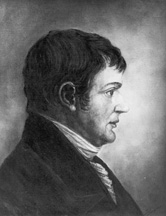 John W. Eppes John W. EppesJohn Wayles Eppes John Wayles Eppes was an attorney, a United States Representative and a Senator from Virginia. One of the planter class, he married his first cousin Maria Jefferson, the youngest surviving daughter of Martha Wayles Skelton and Thomas Jefferson... |
Democratic- Republican |
March 4, 1817 – December 4, 1819 |
15 15th United States Congress -Leadership:- Senate :* President: Daniel D. Tompkins * President pro tempore:** John Gaillard , elected March 4, 1817** James Barbour , elected February 15, 1819- House of Representatives :*Speaker: Henry Clay -Members:... |
6 | Elected in 1817 Resigned because of ill health |
| 16 16th United States Congress -House of Representatives:During this congress, one House seat was added for the new state of Alabama and one seat was reapportioned from Massachusetts to the new state of Maine. For the beginning of the next congress, six more seats from Massachusetts would be reapportioned to... |
||||||
| Vacant | December 4, 1819 – December 14, 1819 |
|||||
| 9 | 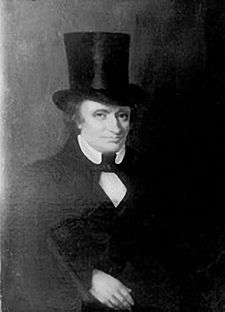 James Pleasants James PleasantsJames Pleasants James Pleasants, Jr. was an American politician who served in the U.S. Senate from 1819 to 1822 and was the 22nd Governor of Virginia from 1822 to 1825. Pleasants was born at “Cold Comfort,” in Powhatan County, Virginia, October 24, 1769. He pursued classical studies and graduated from the College... |
Democratic- Republican |
December 14, 1819 – December 15, 1822 |
16 16th United States Congress -House of Representatives:During this congress, one House seat was added for the new state of Alabama and one seat was reapportioned from Massachusetts to the new state of Maine. For the beginning of the next congress, six more seats from Massachusetts would be reapportioned to... (Continued) |
Elected to finish Eppes's term Resigned |
|
| 17 17th United States Congress The Seventeenth United States Congress was a meeting of the legislative branch of the United States federal government, consisting of the United States Senate and the United States House of Representatives. It met in Washington, D.C. from March 4, 1821 to March 3, 1823, during the fifth and sixth... |
||||||
| Vacant | December 15, 1822 – December 18, 1822 |
|||||
| 10 |  John Taylor John TaylorJohn Taylor of Caroline John Taylor usually called John Taylor of Caroline was a politician and writer. He served in the Virginia House of Delegates and in the United States Senate . He wrote several books on politics and agriculture... |
Democratic- Republican |
December 18, 1822 – August 21, 1824 |
17 17th United States Congress The Seventeenth United States Congress was a meeting of the legislative branch of the United States federal government, consisting of the United States Senate and the United States House of Representatives. It met in Washington, D.C. from March 4, 1821 to March 3, 1823, during the fifth and sixth... (Continued) |
Elected to finish Pleasants's term | |
| Crawford Republican |
18 18th United States Congress The Eighteenth United States Congress was a meeting of the legislative branch of the United States federal government, consisting of the United States Senate and the United States House of Representatives. It met in Washington, D.C. from March 4, 1823 to March 3, 1825, during the seventh and eighth... |
7 | Re-elected in 1823 Died |
|||
| Vacant | August 21, 1824 – December 7, 1824 |
|||||
| 11 | 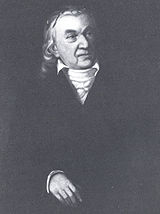 Littleton W. Tazewell Littleton W. TazewellLittleton Waller Tazewell Littleton Waller Tazewell was a U.S. Representative, U.S. Senator from and the 26th Governor of Virginia.Tazewell, son of Henry Tazewell, was born in Williamsburg, Virginia, where his grandfather Benjamin Waller was a lawyer who taught him Latin... |
Jacksonian | December 7, 1824 – July 16, 1832 |
18 18th United States Congress The Eighteenth United States Congress was a meeting of the legislative branch of the United States federal government, consisting of the United States Senate and the United States House of Representatives. It met in Washington, D.C. from March 4, 1823 to March 3, 1825, during the seventh and eighth... (Continued) |
Elected to finish Taylor's term | |
| 19 19th United States Congress -House of Representatives:-Leadership:- Senate :* President: John C. Calhoun * President pro tempore: John Gaillard , until December 4, 1825** Nathaniel Macon , from May 20, 1826- House of Representatives :* Speaker: John W. Taylor -Members:... |
||||||
| 20 20th United States Congress -House of Representatives:-Leadership:- Senate :* President: John C. Calhoun * President pro tempore: Samuel Smith - House of Representatives :* Speaker: Andrew Stevenson -Members:This list is arranged by chamber, then by state... |
||||||
| 21 21st United States Congress -House of Representatives:-Leadership:- Senate :* President: John C. Calhoun * President pro tempore: Samuel Smith - House of Representatives :* Speaker: Andrew Stevenson -Members:This list is arranged by chamber, then by state... |
8 | Re-elected in 1829 Resigned |
||||
| 22 22nd United States Congress -House of Representatives:-Leadership:- Senate :* President:** John C. Calhoun , resigned December 28, 1832, thereafter vacant.* President pro tempore:** Samuel Smith , first elected December 5, 1831** Littleton W... |
||||||
| Vacant | July 16, 1832 – December 10, 1832 |
|||||
| 12 |  William C. Rives William C. RivesWilliam Cabell Rives William Cabell Rives was an American lawyer, politician and diplomat from Albemarle County, Virginia. He represented Virginia as a Jackson Democrat in both the U.S. House and Senate and also served as the U.S. minister to France.... |
Jacksonian | December 10, 1832 – February 22, 1834 |
22 22nd United States Congress -House of Representatives:-Leadership:- Senate :* President:** John C. Calhoun , resigned December 28, 1832, thereafter vacant.* President pro tempore:** Samuel Smith , first elected December 5, 1831** Littleton W... (Continued) |
Elected to finish Tazewell's term Resigned |
|
| 23 23rd United States Congress -House of Representatives:For the beginning of this congress, the size of the House was increased from 213 seats to 240 seats, following the 1830 United States Census .- Leadership :- Senate :* President: Martin Van Buren... |
||||||
| Vacant | February 22, 1834 – February 26, 1834 |
|||||
| 13 | Benjamin W. Leigh Benjamin W. Leigh Benjamin Watkins Leigh was an American lawyer and politician from Richmond, Virginia. He served in the Virginia House of Delegates and represented Virginia in the United States Senate. Benjamin Watkins Leigh was born in Chesterfield County on June 18, 1781, the son of the Reverend William Leigh... |
Anti- Jacksonian National Republican Party (United States) The National Republicans were a political party in the United States. During the administration of John Quincy Adams , the president's supporters were referred to as Adams Men or Anti-Jackson. When Andrew Jackson was elected President of the United States in 1828, this group went into opposition... |
February 26, 1834 – July 4, 1836 |
23 23rd United States Congress -House of Representatives:For the beginning of this congress, the size of the House was increased from 213 seats to 240 seats, following the 1830 United States Census .- Leadership :- Senate :* President: Martin Van Buren... (Continued) |
Elected to finish Rives's term | |
| 24 24th United States Congress -House of Representatives:During this congress one House seat was added for each of the new states of Arkansas and Michigan.-Leadership:- Senate :* President: Martin Van Buren * President pro tempore: William R. King - House of Representatives :... |
9 | Re-elected in 1835 Resigned |
||||
| Vacant | July 4, 1836 – December 12, 1836 |
|||||
| 14 | 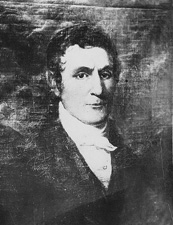 Richard E. Parker Richard E. ParkerRichard E. Parker Richard Elliott Parker was born at Rock Spring, Westmoreland County, Virginia, son of Captain William Harwar and Mary Parker, and grandson of Judge Richard and Elizabeth Parker. He studied law at Lawfield, Virginia, under his grandfather, Judge Richard Parker... |
Jacksonian | December 12, 1836 – March 13, 1837 |
24 24th United States Congress -House of Representatives:During this congress one House seat was added for each of the new states of Arkansas and Michigan.-Leadership:- Senate :* President: Martin Van Buren * President pro tempore: William R. King - House of Representatives :... (Continued) |
Elected to finish Leigh's term Resigned to become judge of the Virginia Supreme Court of Appeals |
|
| Democratic Democratic Party (United States) The Democratic Party is one of two major contemporary political parties in the United States, along with the Republican Party. The party's socially liberal and progressive platform is largely considered center-left in the U.S. political spectrum. The party has the lengthiest record of continuous... |
25 25th United States Congress -House of Representatives:-Leadership:- Senate :* President: Richard Mentor Johnson * President pro tempore: William R. King - House of Representatives :* Speaker: James K. Polk -Members:This list is arranged by chamber, then by state... |
|||||
| 15 | William H. Roane William H. Roane William Henry Roane was a politician from Virginia. He was the son of Judge Spencer Roane and the grandson of founding father Patrick Henry.Born in Virginia, Roane pursued in preparatory studies as a young man... |
Democratic Democratic Party (United States) The Democratic Party is one of two major contemporary political parties in the United States, along with the Republican Party. The party's socially liberal and progressive platform is largely considered center-left in the U.S. political spectrum. The party has the lengthiest record of continuous... |
March 14, 1837 – March 4, 1841 |
25 25th United States Congress -House of Representatives:-Leadership:- Senate :* President: Richard Mentor Johnson * President pro tempore: William R. King - House of Representatives :* Speaker: James K. Polk -Members:This list is arranged by chamber, then by state... (Continued) |
Elected to finish Parker's term Lost re-election |
|
| 26 26th United States Congress -House of Representatives:- Leadership :- Senate :*President: Richard M. Johnson *President pro tempore: William R. King - House of Representatives :*Speaker: Robert M.T. Hunter -Members:This list is arranged by chamber, then by state... |
||||||
| 16 | William S. Archer William S. Archer William Segar Archer was a politician and lawyer from Virginia who served in the United States Senate from 1841 to 1847. He was the nephew of Joseph Eggleston.... |
Whig Whig Party (United States) The Whig Party was a political party of the United States during the era of Jacksonian democracy. Considered integral to the Second Party System and operating from the early 1830s to the mid-1850s, the party was formed in opposition to the policies of President Andrew Jackson and his Democratic... |
March 4, 1841 – March 4, 1847 |
27 27th United States Congress The Twenty-seventh United States Congress was a meeting of the legislative branch of the United States federal government, consisting of the United States Senate and the United States House of Representatives. It met in Washington, D.C. from March 4, 1841 to March 3, 1843, during the one-month... |
10 | Elected in 1841 Lost re-election |
| 28 28th United States Congress -House of Representatives:Following the 1840 United States Census, Congress reapportioned the House to include 223 seats . During this congress, one House seat was added for the new state of Florida .- Senate :*President: Vacant... |
||||||
| 29 29th United States Congress -House of Representatives:During this congress, two House seats were added for each of the new states of Texas and Iowa.-Leadership:-Senate:* President: George M. Dallas * President pro tempore: Willie P. Mangum... |
||||||
| 17 |  Robert M. T. Hunter Robert M. T. HunterRobert Mercer Taliaferro Hunter -References:* Patrick, Rembert W. . Jefferson Davis and His Cabinet. Baton Rouge: Louisiana State University Press. pp. 90–101.-External links:* – A speech by R. M. T. Hunter before the U.S. House of Representatives, May 8th, 1846... |
Democratic Democratic Party (United States) The Democratic Party is one of two major contemporary political parties in the United States, along with the Republican Party. The party's socially liberal and progressive platform is largely considered center-left in the U.S. political spectrum. The party has the lengthiest record of continuous... |
March 4, 1847 – July 11, 1861 |
30 30th United States Congress The Thirtieth United States Congress was a meeting of the legislative branch of the United States federal government, consisting of the United States Senate and the United States House of Representatives. It met in Washington, D.C. from March 4, 1847 to March 3, 1849, during the last two years of... |
11 | Elected in 1847 |
| 31 31st United States Congress The Thirty-first United States Congress was a meeting of the legislative branch of the United States federal government, consisting of the United States Senate and the United States House of Representatives. It met in Washington, D.C. from March 4, 1849 to March 3, 1851, during the last 17 months... |
||||||
| 32 32nd United States Congress The Thirty-second United States Congress was a meeting of the legislative branch of the United States federal government, consisting of the United States Senate and the United States House of Representatives. It met in Washington, D.C. from March 4, 1851 to March 3, 1853, during the third and... |
||||||
| 33 33rd United States Congress The Thirty-third United States Congress was a meeting of the legislative branch of the United States federal government, consisting of the United States Senate and the United States House of Representatives. It met in Washington, D.C. from March 4, 1853 to March 3, 1855, during the first two years... |
12 | Re-elected in 1853 | ||||
| 34 34th United States Congress The Thirty-fourth United States Congress was a meeting of the legislative branch of the United States federal government, consisting of the United States Senate and the United States House of Representatives. It met in Washington, D.C. from March 4, 1855 to March 4, 1857, during the last two years... |
||||||
| 35 35th United States Congress The 35th United States Congress was a meeting of the legislative branch of the United States federal government, consisting of the United States Senate and the United States House of Representatives. It met in Washington, D.C. from March 4, 1857 to March 3, 1859, during the first two years of James... |
||||||
| 36 36th United States Congress The Thirty-sixth United States Congress was a meeting of the legislative branch of the United States federal government, consisting of the United States Senate and the United States House of Representatives. It met in Washington, D.C. from March 4, 1859 to March 4, 1861, during the third and fourth... |
13 | Re-elected in 1859 Expelled |
||||
| 37 37th United States Congress The Thirty-seventh United States Congress was a meeting of the legislative branch of the United States federal government, consisting of the United States Senate and the United States House of Representatives. It met in Washington, D.C. from March 4, 1861 to March 4, 1863, during the first two... |
||||||
| Vacant | July 11, 1861 – July 13, 1861 |
|||||
| 18 | 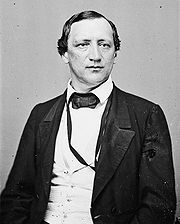 John S. Carlile John S. CarlileJohn S. Carlile John Snyder Carlile was an American merchant, lawyer, and politician, including a United States Senator. A strong supporter of the Union cause during the American Civil War, he represented the loyalist faction of Virginia, which was eventually separated into two distinct states over his... |
Unionist Unionist Party (United States) The Union Party was a fusion political party conceived by Republicans in 1861 to combine people of all political affiliations into a single movement committed to the preservation of the Union and to war. Republicans wanted to project an image of wartime nonpartisanship and they also expected to... |
July 13, 1861 – March 4, 1865 |
37 37th United States Congress The Thirty-seventh United States Congress was a meeting of the legislative branch of the United States federal government, consisting of the United States Senate and the United States House of Representatives. It met in Washington, D.C. from March 4, 1861 to March 4, 1863, during the first two... (Continued) |
Elected to finish Hunter's term |
|
| 38 38th United States Congress -House of Representatives:Before this Congress, the 1860 United States Census and resulting reapportionment changed the size of the House to 241 members... |
||||||
| Vacant | March 4, 1865 – January 26, 1870 |
39 39th United States Congress The Thirty-ninth United States Congress was a meeting of the legislative branch of the United States federal government, consisting of the United States Senate and the United States House of Representatives. It met in Washington, D.C. from March 4, 1865 to March 4, 1867, during the first month of... |
14 | U.S. Civil War and Reconstruction John Underwood John Curtiss Underwood John Curtiss Underwood was a lawyer, Abolitionist politician, and federal judge.Underwood graduated from Hamilton College in 1832 and was a founding member of the Alpha Delta Phi society. He practiced law from 1839-1856. Originally from New York, he married a granddaughter of Edward B. Jackson... (U Unionist Party (United States) The Union Party was a fusion political party conceived by Republicans in 1861 to combine people of all political affiliations into a single movement committed to the preservation of the Union and to war. Republicans wanted to project an image of wartime nonpartisanship and they also expected to... ) presented his credentials on March 9, 1865, but was not seated |
||
| 40 40th United States Congress The Fortieth United States Congress was a meeting of the legislative branch of the United States federal government, consisting of the United States Senate and the United States House of Representatives. It met in Washington, D.C. from March 4, 1867 to March 4, 1869, during the third and fourth... |
||||||
| 41 41st United States Congress -House of Representatives:- Senate :* President : Schuyler Colfax* President pro tempore: Henry B. Anthony - House of Representatives :* Speaker: James G. Blaine -Members:This list is arranged by chamber, then by state... |
||||||
| 19 | 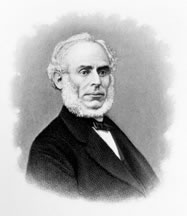 John W. Johnston John W. JohnstonJohn W. Johnston John Warfield Johnston was an American lawyer and politician from Abingdon, Virginia. He served in the Virginia State Senate, and represented Virginia in the United States Senate when the state was readmitted after the American Civil War... |
Democratic Democratic Party (United States) The Democratic Party is one of two major contemporary political parties in the United States, along with the Republican Party. The party's socially liberal and progressive platform is largely considered center-left in the U.S. political spectrum. The party has the lengthiest record of continuous... |
January 26, 1870 – March 4, 1883 |
41 41st United States Congress -House of Representatives:- Senate :* President : Schuyler Colfax* President pro tempore: Henry B. Anthony - House of Representatives :* Speaker: James G. Blaine -Members:This list is arranged by chamber, then by state... (Continued) |
Elected to finish vacant term | |
| 42 42nd United States Congress The Forty-second United States Congress was a meeting of the legislative branch of the United States federal government, consisting of the United States Senate and the United States House of Representatives. It met in Washington, D.C. from March 4, 1871 to March 3, 1873, during the third and fourth... |
15 | Re-elected in 1871 | ||||
| 43 43rd United States Congress The Forty-third United States Congress was a meeting of the legislative branch of the United States federal government, consisting of the United States Senate and the United States House of Representatives. It met in Washington, D.C. from March 4, 1873 to March 4, 1875, during the fifth and sixth... |
||||||
| 44 44th United States Congress The Forty-fourth United States Congress was a meeting of the legislative branch of the United States federal government, consisting of the United States Senate and the United States House of Representatives. It met in Washington, D.C. from March 4, 1875 to March 4, 1877, during the seventh and... |
||||||
| 45 45th United States Congress -House of Representatives:-Leadership:-Senate:*President: William A. Wheeler *President pro tempore: Thomas W. Ferry -House of Representatives:*Speaker: Samuel J. Randall -Members:This list is arranged by chamber, then by state... |
16 | Re-elected in 1877 Lost re-election |
||||
| 46 46th United States Congress The Forty-sixth United States Congress was a meeting of the legislative branch of the United States federal government, consisting of the United States Senate and the United States House of Representatives. It met in Washington, D.C. from March 4, 1879 to March 4, 1881, during the last two years of... |
||||||
| 47 47th United States Congress The Forty-seventh United States Congress was a meeting of the legislative branch of the United States federal government, consisting of the United States Senate and the United States House of Representatives. It met in Washington, D.C. from March 4, 1881 to March 4, 1883, during the administration... |
||||||
| 20 |  Harrison H. Riddleberger Harrison H. RiddlebergerHarrison H. Riddleberger Harrison Holt Riddleberger was an American lawyer, newspaper editor, and politician from Woodstock, Virginia. He served in the Virginia House of Delegates and State Senate, and was U.S. Senator from Virginia from 1883 to 1889.... |
Readjuster Readjuster Party The Readjuster Party was a political coalition formed in Virginia in the late 1870s during the turbulent period following the American Civil War. Readjusters aspired "to break the power of wealth and established privilege" and to promote public education, a program which attracted biracial support.... |
March 4, 1883 – March 4, 1889 |
48 48th United States Congress The Forty-eighth United States Congress was a meeting of the legislative branch of the United States federal government, consisting of the United States Senate and the United States House of Representatives. It met in Washington, D.C. from March 4, 1883 to March 4, 1885, during the last two years... |
17 | Elected in 1883 Retired |
| 49 49th United States Congress The Forty-ninth United States Congress was a meeting of the legislative branch of the United States federal government, consisting of the United States Senate and the United States House of Representatives. It met in Washington, D.C. from March 4, 1885 to March 4, 1887, during the first two years... |
||||||
| 50 50th United States Congress The Fiftieth United States Congress was a meeting of the legislative branch of the United States federal government, consisting of the United States Senate and the United States House of Representatives. It met in Washington, D.C. from March 4, 1887 to March 4, 1889, during the third and fourth... |
||||||
| 21 |  John S. Barbour, Jr. John S. Barbour, Jr.John S. Barbour, Jr. John Strode Barbour, Jr. was a Representative and a Senator from Virginia. He is best remembered for taking power in Virginia from the short-lived Readjuster Party in the late 1880s, forming the first political machine of "Conservative Democrats", whose power was to last 80 years until the demise... |
Democratic Democratic Party (United States) The Democratic Party is one of two major contemporary political parties in the United States, along with the Republican Party. The party's socially liberal and progressive platform is largely considered center-left in the U.S. political spectrum. The party has the lengthiest record of continuous... |
March 4, 1889 – May 14, 1892 |
51 51st United States Congress The Fifty-first United States Congress, referred to by some critics as the Billion Dollar Congress, was a meeting of the legislative branch of the United States federal government, consisting of the United States Senate and the United States House of Representatives. It met in Washington, D.C... |
18 | Elected in 1889 Died |
| 52 52nd United States Congress The Fifty-second United States Congress was a meeting of the legislative branch of the United States federal government, consisting of the United States Senate and the United States House of Representatives. It met in Washington, D.C... |
||||||
| Vacant | May 14, 1892 – May 28, 1892 |
|||||
| 22 | 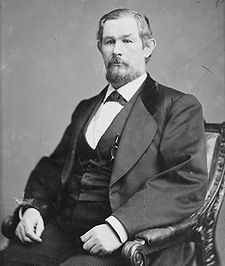 Eppa Hunton Eppa HuntonEppa Hunton Eppa Hunton II was a U.S. Representative and Senator from Virginia and a brigadier general in the Confederate Army during the American Civil War.-Early years:... |
Democratic Democratic Party (United States) The Democratic Party is one of two major contemporary political parties in the United States, along with the Republican Party. The party's socially liberal and progressive platform is largely considered center-left in the U.S. political spectrum. The party has the lengthiest record of continuous... |
May 28, 1892 – March 4, 1895 |
52 52nd United States Congress The Fifty-second United States Congress was a meeting of the legislative branch of the United States federal government, consisting of the United States Senate and the United States House of Representatives. It met in Washington, D.C... (Continued) |
Appointed to continue Barbour's term Elected to finish Barbour's term Retired |
|
| 53 53rd United States Congress The Fifty-third United States Congress was a meeting of the legislative branch of the United States federal government, consisting of the United States Senate and the United States House of Representatives. It met in Washington, D.C. from March 4, 1893 to March 4, 1895, during the fifth and sixth... |
||||||
| 23 | 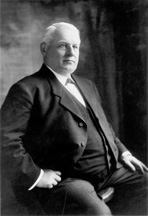 Thomas S. Martin Thomas S. MartinThomas S. Martin Thomas Staples Martin was an American lawyer and Democratic Party politician from Charlottesville, Virginia. He represented Virginia in the United States Senate for nearly twenty-five years.... |
Democratic Democratic Party (United States) The Democratic Party is one of two major contemporary political parties in the United States, along with the Republican Party. The party's socially liberal and progressive platform is largely considered center-left in the U.S. political spectrum. The party has the lengthiest record of continuous... |
March 4, 1895 – November 12, 1919 |
54 54th United States Congress - House of Representatives :-Leadership:- Senate :* President: Adlai E. Stevenson * President pro tempore: William P. Frye - Majority leadership :* Republican Conference Chairman: John Sherman- Minority leadership :... |
19 | Elected in 1894 |
| 55 55th United States Congress -House of Representatives:* Republican: 206 * Democratic: 124* Populist: 22* Silver Republican: 3* Silver: 1* Independent Republican: 1TOTAL members: 357-Leadership:-Senate:* President: Garret Hobart * President pro tempore: William P... |
||||||
| 56 56th United States Congress -House of Representatives:- Leadership :- Senate :* President: Garret Hobart , until November 21, 1899 , vacant thereafter.* President pro tempore: William P. Frye * Democratic Caucus Chairman: James K. Jones... |
||||||
| 57 57th United States Congress -House of Representatives:*Democratic: 151*Republican: 200 *Populist: 5*Silver : 1TOTAL members: 357-Leadership:-Senate:* President: Theodore Roosevelt , until September 14, 1901, vacant thereafter.... |
20 | Re-elected in 1900 United States Senate elections, 1900 The United States Senate election of 1900 was an election which had the Republican Party gain three seats in the United States Senate, and which corresponded with President William McKinley's landslide re-election.... |
||||
| 58 58th United States Congress - House of Representatives :* Republican : 209 * Democratic : 176* Silver Republican : 1TOTAL members: 386-Senate:* President: Vacant* President pro tempore: William P. Frye -Members:... |
||||||
| 59 59th United States Congress The Fifty-ninth United States Congress was a meeting of the legislative branch of the United States federal government, composed of the United States Senate and the United States House of Representatives. It met in Washington, DC from March 4, 1905 to March 4, 1907, during the fifth and sixth... |
||||||
| 60 60th United States Congress The Sixtieth United States Congress was a meeting of the legislative branch of the United States federal government, composed of the United States Senate and the United States House of Representatives. It met in Washington, DC from March 4, 1907 to March 4, 1909, during the last two years of... |
21 | Re-elected in 1906 United States Senate elections, 1906 The United States Senate election of 1906 was an election which had the Republican Party gain three seats in the United States Senate, expanding their majority to almost twice that of the opposing Democratic Party.... |
||||
| 61 61st United States Congress The Sixty-first United States Congress was a meeting of the legislative branch of the United States federal government, composed of the United States Senate and the United States House of Representatives. It met in Washington, DC from March 4, 1909 to March 4, 1911, during the first two years of... |
||||||
| 62 62nd United States Congress - House of Representatives :* Democratic : 230 * Republican : 162* Socialist : 1* Independent : 1TOTAL members: 394-Senate:* President: James S... |
||||||
| 63 63rd United States Congress - House of Representatives:*Democratic : 291 *Republican : 134*Progressive : 9*Independent : 1TOTAL members: 435-Senate:*President of the Senate: Thomas R. Marshall*President pro tempore: James P. Clarke-Senate:... |
22 | Re-elected in 1912 | ||||
| 64 64th United States Congress The Sixty-fourth United States Congress was a meeting of the legislative branch of the United States federal government, composed of the United States Senate and the United States House of Representatives. It met in Washington, DC from March 4, 1915 to March 4, 1917, during the third and fourth... |
||||||
| 65 65th United States Congress The Sixty-fifth United States Congress was a meeting of the legislative branch of the United States federal government, composed of the United States Senate and the United States House of Representatives. It met in Washington, DC from March 4, 1917 to March 4, 1919, during the fourth and fifth... |
||||||
| 66 66th United States Congress The Sixty-sixth United States Congress was a meeting of the legislative branch of the United States federal government, comprising the United States Senate and the United States House of Representatives. It met in Washington, DC from March 4, 1919 to March 4, 1921, during the last two years of... |
23 | Re-elected in 1918 Died |
||||
| Vacant | November 12, 1919 – February 2, 1920 |
|||||
| 24 |  Carter Glass Carter GlassCarter Glass Carter Glass was a newspaper publisher and politician from Lynchburg, Virginia. He served many years in Congress as a member of the Democratic Party. As House co-sponsor, he played a central role in the development of the 1913 Glass-Owen Act that created the Federal Reserve System. Glass... |
Democratic Democratic Party (United States) The Democratic Party is one of two major contemporary political parties in the United States, along with the Republican Party. The party's socially liberal and progressive platform is largely considered center-left in the U.S. political spectrum. The party has the lengthiest record of continuous... |
February 2, 1920 – May 28, 1946 |
66 66th United States Congress The Sixty-sixth United States Congress was a meeting of the legislative branch of the United States federal government, comprising the United States Senate and the United States House of Representatives. It met in Washington, DC from March 4, 1919 to March 4, 1921, during the last two years of... (Continued) |
Appointed to continue Martin's term, but did not immediately qualify, perferring to remain as U.S. Secretary of the Treasury Elected to finish Martin's term |
|
| 67 67th United States Congress The Sixty-seventh United States Congress was a meeting of the legislative branch of the United States federal government, consisting of the United States Senate and the United States House of Representatives. It met in Washington, D.C. from March 4, 1921 to March 4, 1923, during the first two years... |
||||||
| 68 68th United States Congress The Sixty-eighth United States Congress was a meeting of the legislative branch of the United States federal government, consisting of the United States Senate and the United States House of Representatives. It met in Washington, D.C. from March 4, 1923 to March 4, 1925, during the last months of... |
||||||
| 69 69th United States Congress The Sixty-ninth United States Congress was a meeting of the legislative branch of the United States federal government, consisting of the United States Senate and the United States House of Representatives. It met in Washington, D.C. from March 4, 1925 to March 4, 1927, during the third and fourth... |
24 | Re-elected in 1924 | ||||
| 70 70th United States Congress The Seventieth United States Congress was a meeting of the legislative branch of the United States federal government, consisting of the United States Senate and the United States House of Representatives. It met in Washington, D.C. from March 4, 1927 to March 3, 1929, during the last two years of... |
||||||
| 71 71st United States Congress The Seventy-first United States Congress was a meeting of the legislative branch of the United States federal government, consisting of the United States Senate and the United States House of Representatives. It met in Washington, D.C. from March 4, 1929 to March 4, 1931, during the first two years... |
||||||
| 72 72nd United States Congress The Seventy-second United States Congress was a meeting of the legislative branch of the United States federal government, consisting of the United States Senate and the United States House of Representatives. It met in Washington, D.C. from March 4, 1931 to March 4, 1933, during the last two years... |
25 | Re-elected in 1930 | ||||
| 73 73rd United States Congress The Seventy-third United States Congress was a meeting of the legislative branch of the United States federal government, composed of the United States Senate and the United States House of Representatives. It met in Washington, DC from March 4, 1933 to January 3, 1935, during the first two years... |
||||||
| 74 74th United States Congress -House:Also 2 Delegates, 3 Resident Commissioners-Senate:*President of the Senate: John N. Garner *President pro tempore: Key Pittman -Majority leadership:*Majority leader: Joseph T. Robinson... |
||||||
| 75 75th United States Congress The Seventy-fifth United States Congress was a meeting of the legislative branch of the United States federal government, composed of the United States Senate and the United States House of Representatives. It met in Washington, DC from January 3, 1937 to January 3, 1939, during the first two years... |
26 | Re-elected in 1936 | ||||
| 76 76th United States Congress The Seventy-sixth United States Congress was a meeting of the legislative branch of the United States federal government, composed of the United States Senate and the United States House of Representatives. It met in Washington, DC from January 3, 1939 to January 3, 1941, during the seventh and... |
||||||
| 77 77th United States Congress -Major events:* December 7, 1941: Attack on Pearl Harbor* December 8, 1941: Joint Session of Congress met to hear President Roosevelt deliver his "Day of Infamy" speech... |
||||||
| 78 78th United States Congress The Seventy-eighth United States Congress was a meeting of the legislative branch of the United States federal government, composed of the United States Senate and the United States House of Representatives. It met in Washington, DC from January 3, 1943 to January 3, 1945, during the last two years... |
27 | Re-elected in 1942 Died |
||||
| 79 79th United States Congress The Seventy-ninth United States Congress was a meeting of the legislative branch of the United States federal government, composed of the United States Senate and the United States House of Representatives. It met in Washington, DC from January 3, 1945 to January 3, 1947, during the last months of... |
||||||
| Vacant | May 28, 1946 – May 31, 1946 |
|||||
| 25 | Thomas G. Burch Thomas G. Burch Thomas Granville Burch was an American farmer, tobacco manufacturer, and politician from Martinsville, Virginia. He represented Virginia in the U.S. House of Representatives from 1931 until 1946. In 1946 he served as a U.S... |
Democratic Democratic Party (United States) The Democratic Party is one of two major contemporary political parties in the United States, along with the Republican Party. The party's socially liberal and progressive platform is largely considered center-left in the U.S. political spectrum. The party has the lengthiest record of continuous... |
May 31, 1946 – November 5, 1946 |
Appointed to continue Glass's term Retired when successor elected |
||
| 26 | A. Willis Robertson Absalom Willis Robertson Absalom Willis Robertson was an American lawyer and Democratic Party politician from Lexington, Virginia. Also known as A. Willis Robertson, he represented Virginia in both the U.S... |
Democratic Democratic Party (United States) The Democratic Party is one of two major contemporary political parties in the United States, along with the Republican Party. The party's socially liberal and progressive platform is largely considered center-left in the U.S. political spectrum. The party has the lengthiest record of continuous... |
November 5, 1946 – December 30, 1966 |
79 79th United States Congress The Seventy-ninth United States Congress was a meeting of the legislative branch of the United States federal government, composed of the United States Senate and the United States House of Representatives. It met in Washington, DC from January 3, 1945 to January 3, 1947, during the last months of... (Continued) |
Elected to finish Glass's term | |
| 80 80th United States Congress The Eightieth United States Congress was a meeting of the legislative branch of the United States federal government, composed of the United States Senate and the United States House of Representatives. It met in Washington, DC from January 3, 1947 to January 3, 1949, during the third and fourth... |
||||||
| 81 81st United States Congress The Eighty-first United States Congress was a meeting of the legislative branch of the United States federal government, composed of the United States Senate and the United States House of Representatives... |
28 | Re-elected in 1948 | ||||
| 82 82nd United States Congress The Eighty-second United States Congress was a meeting of the legislative branch of the United States federal government, composed of the United States Senate and the United States House of Representatives. It met in Washington, DC from January 3, 1951 to January 3, 1953, during the last two years... |
||||||
| 83 83rd United States Congress The Eighty-third United States Congress was a meeting of the legislative branch of the United States federal government, composed of the United States Senate and the United States House of Representatives. It met in Washington, DC from January 3, 1953 to January 3, 1955, during the first two years... |
||||||
| 84 84th United States Congress The Eighty-fourth United States Congress was a meeting of the legislative branch of the United States federal government, composed of the United States Senate and the United States House of Representatives. It met in Washington, DC from January 3, 1955 to January 3, 1957, during the third and... |
29 | Re-elected in 1954 | ||||
| 85 85th United States Congress The Eighty-fifth United States Congress was a meeting of the legislative branch of the United States federal government, composed of the United States Senate and the United States House of Representatives. It met in Washington, DC from January 3, 1957 to January 3, 1959, during the fifth and sixth... |
||||||
| 86 86th United States Congress The Eighty-sixth United States Congress was a meeting of the legislative branch of the United States federal government, composed of the United States Senate and the United States House of Representatives. It met in Washington, DC from January 3, 1959 to January 3, 1961, during the last two years... |
||||||
| 87 87th United States Congress -House of Representatives :-Senate:* President: Richard Nixon , until January 20, 1961** Lyndon Johnson , from January 20, 1961* President pro tempore: Carl Hayden -House of Representatives:... |
30 | Re-elected in 1960 Lost re-nomination, and retired early to give successor preferential seniority |
||||
| 88 88th United States Congress The Eighty-eighth United States Congress was a meeting of the legislative branch of the United States federal government, composed of the United States Senate and the United States House of Representatives. It met in Washington, DC from January 3, 1963 to January 3, 1965, during the last year of... |
||||||
| 89 89th United States Congress -House of Representatives:- Senate :* President of the Senate: Hubert Humphrey , starting January 20, 1965* President pro tempore: Carl Hayden - Majority leadership :* Majority Leader and Democratic Conference Chairman: Mike Mansfield... |
||||||
| 27 | William B. Spong, Jr. William B. Spong, Jr. William Belser Spong, Jr. was a Democratic Party politician and a United States Senator who represented the state of Virginia from 1966 to 1973.... |
Democratic Democratic Party (United States) The Democratic Party is one of two major contemporary political parties in the United States, along with the Republican Party. The party's socially liberal and progressive platform is largely considered center-left in the U.S. political spectrum. The party has the lengthiest record of continuous... |
December 31, 1966 – January 3, 1973 |
89 89th United States Congress -House of Representatives:- Senate :* President of the Senate: Hubert Humphrey , starting January 20, 1965* President pro tempore: Carl Hayden - Majority leadership :* Majority Leader and Democratic Conference Chairman: Mike Mansfield... (Continued) |
Appointed to finish Robertson's term, having already been elected to the next term | |
| 90 90th United States Congress The Ninetieth United States Congress was a meeting of the legislative branch of the United States federal government, composed of the United States Senate and the United States House of Representatives. It met in Washington, DC from January 3, 1967 to January 3, 1969, during the last two years of... |
31 | Elected in 1966 Lost re-election |
||||
| 91 91st United States Congress The Ninety-first United States Congress was a meeting of the legislative branch of the United States federal government, composed of the United States Senate and the United States House of Representatives. It met in Washington, DC from January 3, 1969 to January 3, 1971, during the first two years... |
||||||
| 92 92nd United States Congress The Ninety-second United States Congress was a meeting of the legislative branch of the United States federal government, composed of the United States Senate and the United States House of Representatives... |
||||||
| 28 | William L. Scott William L. Scott William Lloyd Scott was a Republican politician from Virginia.Scott was born in Williamsburg, Virginia. He received a law degree from George Washington University, and was employed by the federal government 1934–1961, principally as trial attorney with Department of Justice... |
Republican Republican Party (United States) The Republican Party is one of the two major contemporary political parties in the United States, along with the Democratic Party. Founded by anti-slavery expansion activists in 1854, it is often called the GOP . The party's platform generally reflects American conservatism in the U.S... |
January 3, 1973 – January 1, 1979 |
93 93rd United States Congress The Ninety-third United States Congress was a meeting of the legislative branch of the United States federal government, composed of the United States Senate and the United States House of Representatives. It met in Washington, DC from January 3, 1973 to January 3, 1975, during the end of Richard... |
32 | Elected in 1972 Retired, then resigned early to give successor preferential seniority |
| 94 94th United States Congress The Ninety-fourth United States Congress was a meeting of the legislative branch of the United States federal government, composed of the United States Senate and the United States House of Representatives. It met in Washington, DC from January 3, 1975 to January 3, 1977, during the administration... |
||||||
| 95 95th United States Congress The Ninety-fifth United States Congress was a meeting of the legislative branch of the United States federal government, composed of the United States Senate and the United States House of Representatives. It met in Washington, DC from January 3, 1977 to January 3, 1979, during the first two years... |
||||||
| 29 |  John Warner John WarnerJohn Warner John William Warner, KBE is an American Republican politician who served as Secretary of the Navy from 1972 to 1974 and as a five-term United States Senator from Virginia from January 2, 1979, to January 3, 2009... |
Republican Republican Party (United States) The Republican Party is one of the two major contemporary political parties in the United States, along with the Democratic Party. Founded by anti-slavery expansion activists in 1854, it is often called the GOP . The party's platform generally reflects American conservatism in the U.S... |
January 2, 1979 – January 3, 2009 |
95 95th United States Congress The Ninety-fifth United States Congress was a meeting of the legislative branch of the United States federal government, composed of the United States Senate and the United States House of Representatives. It met in Washington, DC from January 3, 1977 to January 3, 1979, during the first two years... (Continued) |
Appointed to finish Scott's term, having already been elected to the next term | |
| 96 96th United States Congress The Ninety-sixth United States Congress was a meeting of the legislative branch of the United States federal government, composed of the United States Senate and the United States House of Representatives. It met in Washington, DC from January 3, 1979 to January 3, 1981, during the last two years... |
33 | Elected in 1978 United States Senate elections, 1978 The United States Senate election of 1978 in the middle of Democratic President Jimmy Carter's term. The Democrats lost a net of three seats to the Republicans, leaving the balance of the chamber 58-41 in favor of the Democrats.... |
||||
| 97 97th United States Congress The Ninety-seventh United States Congress was a meeting of the legislative branch of the United States federal government, composed of the United States Senate and the United States House of Representatives. It met in Washington, DC from January 3, 1981 to January 3, 1983, during the final weeks of... |
||||||
| 98 98th United States Congress The Ninety-eighth United States Congress was a meeting of the legislative branch of the United States federal government, composed of the United States Senate and the United States House of Representatives. It met in Washington, DC from January 3, 1983 to January 3, 1985, during the third and... |
||||||
| 99 99th United States Congress The Ninety-ninth United States Congress was a meeting of the legislative branch of the United States federal government, composed of the United States Senate and the United States House of Representatives. It met in Washington, DC from January 3, 1985 to January 3, 1987, during the fifth and sixth... |
34 | Re-elected in 1984 United States Senate elections, 1984 The 1984 elections to the United States Senate coincided with the landslide re-election of President Ronald Reagan in the 1984 presidential election... |
||||
| 100 100th United States Congress -House of Representatives:- Senate :* President: George H.W. Bush * President pro tempore: John Stennis - Majority leadership :* Majority Leader, Democratic Conference Chairman, and Democratic Policy Committee Chairman: Robert Byrd... |
||||||
| 101 101st United States Congress The One Hundred First United States Congress was a meeting of the legislative branch of the United States federal government, composed of the United States Senate and the United States House of Representatives. It met in Washington, DC from January 3, 1989 to January 3, 1991, during the first two... |
||||||
| 102 102nd United States Congress -House of Representatives:- Senate :* President:Dan Quayle * President pro tempore: Robert Byrd - Majority leadership :* Majority Leader: George Mitchell* Majority Whip: Wendell Ford- Minority leadership :... |
35 | Re-elected in 1990 United States Senate election in Virginia, 1990 The 1990 United States Senate election in Virginia took place on November 5, 1990. Incumbent Republican U.S. Senator John W. Warner won re-election to a third term. No Democrat filed to run against him as he won every single county and city in the state with over 60% of the vote. Independent Nancy B... |
||||
| 103 103rd United States Congress - House of Representatives :- Leadership :- Senate :* President: Dan Quayle , until January 20, 1993** Al Gore , from January 20, 1993* President pro tempore: Robert Byrd - Majority leadership :* Majority Leader: George Mitchell... |
||||||
| 104 104th United States Congress The One Hundred Fourth United States Congress was a meeting of the legislative branch of the United States federal government, composed of the United States Senate and the United States House of Representatives. It met in Washington, DC from January 3, 1995 to January 3, 1997, during the third and... |
||||||
| 105 105th United States Congress The One Hundred Fifth United States Congress was a meeting of the legislative branch of the United States federal government, composed of the United States Senate and the United States House of Representatives. It met in Washington, DC from January 3, 1997 to January 3, 1999, during the fifth and... |
36 | Re-elected in 1996 | ||||
| 106 106th United States Congress The One Hundred Sixth United States Congress was a meeting of the legislative branch of the United States federal government, composed of the United States Senate and the United States House of Representatives. It met in Washington, DC from January 3, 1999 to January 3, 2001, during the last two... |
||||||
| 107 107th United States Congress The One Hundred Seventh United States Congress was a meeting of the legislative branch of the United States federal government, composed of the United States Senate and the United States House of Representatives. It met in Washington, D.C. from January 3, 2001 to January 3, 2003, during the final... |
||||||
| 108 108th United States Congress The One Hundred Eighth United States Congress was the legislative branch of the United States federal government, composed of the United States Senate and the United States House of Representatives from January 3, 2003 to January 3, 2005, during the third and fourth years of George W. Bush's... |
37 | Re-elected in 2002 United States Senate election in Virginia, 2002 The 2002 United States Senate election in Virginia was held on November 5, 2002. Incumbent Republican U.S. Senator John Warner won re-election to a fifth term, making him one of only three Virginia U.S. Senators to serve five or more terms... Retired |
||||
| 109 109th United States Congress The One Hundred Ninth United States Congress was the legislative branch of the United States, composed of the United States Senate and the United States House of Representatives, from January 3, 2005 to January 3, 2007, during the fifth and sixth years of George W. Bush's presidency. House members... |
||||||
| 110 110th United States Congress The One Hundred Tenth United States Congress was the meeting of the legislative branch of the United States federal government, between January 3, 2007, and January 3, 2009, during the last two years of the second term of President George W. Bush. It was composed of the Senate and the House of... |
||||||
| 30 |  Mark Warner Mark WarnerMark Warner Mark Robert Warner is an American politician and businessman, currently serving in the United States Senate as the junior senator from the Commonwealth of Virginia. He is a member of the Democratic Party. Warner was the 69th governor of Virginia from 2002 to 2006 and is the honorary chairman of... |
Democratic Democratic Party (United States) The Democratic Party is one of two major contemporary political parties in the United States, along with the Republican Party. The party's socially liberal and progressive platform is largely considered center-left in the U.S. political spectrum. The party has the lengthiest record of continuous... |
January 3, 2009 – Present |
111 111th United States Congress The One Hundred Eleventh United States Congress was the meeting of the legislative branch of the United States federal government from January 3, 2009 until January 3, 2011. It began during the last two weeks of the George W. Bush administration, with the remainder spanning the first two years of... |
38 | Elected in 2008 United States Senate election in Virginia, 2008 The 2008 United States Senate election in Virginia was held on November 4, 2008. Incumbent Republican U.S. Senator John Warner decided to retire instead of seeking a sixth term... |
| 112 112th United States Congress The One Hundred Twelfth United States Congress is the current meeting of the legislative branch of the United States federal government, composed of the United States Senate and the United States House of Representatives. It convened in Washington, D.C. on January 3, 2011, and will end on January... |
||||||
| 113 113th United States Congress The One Hundred Thirteenth United States Congress will be the next meeting of the legislative branch of the United States federal government after the 112th Congress is seated. It will be composed of the United States Senate and the United States House of Representatives. It is scheduled to meet... |
||||||
| # | Senator | Party | Years | Congress | Term | Electoral history |
Longest serving
| Senator | First served | Last served | Length of service |
|---|---|---|---|
| Harry F. Byrd Harry F. Byrd Harry Flood Byrd, Sr. of Berryville in Clarke County, Virginia, was an American newspaper publisher, farmer and politician. He was a descendant of one of the First Families of Virginia... |
March 4, 1933 | November 10, 1965 | 32 years, 8 months, 6 days |
| John W. Warner John Warner John William Warner, KBE is an American Republican politician who served as Secretary of the Navy from 1972 to 1974 and as a five-term United States Senator from Virginia from January 2, 1979, to January 3, 2009... |
January 2, 1979 | January 3, 2009 | 30 years, 1 day |
| E. Carter Glass Carter Glass Carter Glass was a newspaper publisher and politician from Lynchburg, Virginia. He served many years in Congress as a member of the Democratic Party. As House co-sponsor, he played a central role in the development of the 1913 Glass-Owen Act that created the Federal Reserve System. Glass... |
February 20, 1920 | May 28, 1946 | 26 years, 3 months, 8 days |
| Thomas S. Martin Thomas S. Martin Thomas Staples Martin was an American lawyer and Democratic Party politician from Charlottesville, Virginia. He represented Virginia in the United States Senate for nearly twenty-five years.... |
March 4, 1895 | November 12, 1919 | 24 years, 8 months, 8 days |
| John W. Daniel John W. Daniel John Warwick Daniel was an American lawyer, author, and Democratic politician from Lynchburg, Virginia. He served in the Virginia House of Delegates and represented Virginia in both the U.S. House and then five terms in the Senate... |
March 4, 1887 | June 29, 1910 | 23 years, 3 months, 25 days |
Shortest serving
| Senator | First served | Last served | Length of service |
|---|---|---|---|
| Richard E. Parker Richard E. Parker Richard Elliott Parker was born at Rock Spring, Westmoreland County, Virginia, son of Captain William Harwar and Mary Parker, and grandson of Judge Richard and Elizabeth Parker. He studied law at Lawfield, Virginia, under his grandfather, Judge Richard Parker... |
December 15, 1836 | February 13, 1837 | 0 years, 1 month, 29 days |
| Thomas G. Burch Thomas G. Burch Thomas Granville Burch was an American farmer, tobacco manufacturer, and politician from Martinsville, Virginia. He represented Virginia in the U.S. House of Representatives from 1931 until 1946. In 1946 he served as a U.S... |
May 31, 1946 | November 5, 1946 | 0 years, 5 months, 5 days |
| Abraham B. Venable Abraham B. Venable Abraham Bedford Venable was a representative and senator from Virginia. He was the uncle of congressman Abraham Watkins Venable.... |
December 7, 1803 | June 7, 1804 | 0 years, 6 months, 0 days |
| John Walker John Walker (politician) John Walker was a public official from Virginia.Walker was born in Virginia, the son of Dr. Thomas Walker. He received private education before attending the College of William and Mary, which he graduated from in 1764... |
March 31, 1790 | November 9, 1790 | 0 years, 7 months, 9 days |
| Lemuel J. Bowden Lemuel J. Bowden Lemuel Jackson Bowden was an American lawyer and politician from Williamsburg, Virginia.Bowden served as mayor of Williamsburg, Virginia from 1862 to 1863 and represented Virginia in the United States Senate in 1863 as a member of the Unionist Party.Bowden died of smallpox while in office at... |
March 4, 1863 | January 2, 1864 | 0 years, 9 months, 29 days |
Youngest
| Senator | Date of birth | First served | Age |
|---|---|---|---|
| Armistead T. Mason Armistead Thomson Mason Armistead Thomson Mason , the son of Stevens Thomson Mason, was a U.S. Senator from Virginia from 1816 to 1817.-Early life and education:... |
August 4, 1787 | January 3, 1816 | 28 years, 4 months, 30 days |
| James Monroe James Monroe James Monroe was the fifth President of the United States . Monroe was the last president who was a Founding Father of the United States, and the last president from the Virginia dynasty and the Republican Generation... |
April 28, 1758 | November 9, 1790 | 32 years, 6 months, 9 days |
| Stevens T. Mason Stevens Thomson Mason (Virginia) Stevens Thomson Mason was a Colonel in the Continental Army during the Revolutionary War, a member of the Virginia state legislature and a Republican U.S. Senator from Virginia .-Early life and military career:... |
December 29, 1760 | November 17, 1794 | 33 years, 10 months, 19 days |
| Paul S. Trible, Jr. Paul S. Trible, Jr. Paul Seward Trible, Jr. is a former Representative and Senator in the United States Congress from Virginia and current president of Christopher Newport University. Trible graduated from Hampden-Sydney College in 1968 where he received his Bachelor of Arts in History... |
December 29, 1946 | January 3, 1983 | 36 years, 0 months, 5 days |
| John Tyler, Jr. John Tyler John Tyler was the tenth President of the United States . A native of Virginia, Tyler served as a state legislator, governor, U.S. representative, and U.S. senator before being elected Vice President . He was the first to succeed to the office of President following the death of a predecessor... |
March 29, 1790 | March 4, 1827 | 36 years, 11 months, 3 days |
Oldest
| Senator | Date of birth | Last served | Age |
|---|---|---|---|
| E. Carter Glass Carter Glass Carter Glass was a newspaper publisher and politician from Lynchburg, Virginia. He served many years in Congress as a member of the Democratic Party. As House co-sponsor, he played a central role in the development of the 1913 Glass-Owen Act that created the Federal Reserve System. Glass... |
January 4, 1858 | May 28, 1946 | 88 years, 4 months, 24 days |
| John W. Warner John Warner John William Warner, KBE is an American Republican politician who served as Secretary of the Navy from 1972 to 1974 and as a five-term United States Senator from Virginia from January 2, 1979, to January 3, 2009... |
February 18, 1927 | January 3, 2009 | 81 years, 10 months, 20 days |
| A. Willis Robertson Absalom Willis Robertson Absalom Willis Robertson was an American lawyer and Democratic Party politician from Lexington, Virginia. Also known as A. Willis Robertson, he represented Virginia in both the U.S... |
May 27, 1887 | December 30, 1966 | 79 years, 7 months, 3 days |
| Harry F. Byrd Harry F. Byrd Harry Flood Byrd, Sr. of Berryville in Clarke County, Virginia, was an American newspaper publisher, farmer and politician. He was a descendant of one of the First Families of Virginia... |
June 10, 1887 | November 10, 1965 | 78 years, 5 months, 0 days |
| Thomas G. Burch Thomas G. Burch Thomas Granville Burch was an American farmer, tobacco manufacturer, and politician from Martinsville, Virginia. He represented Virginia in the U.S. House of Representatives from 1931 until 1946. In 1946 he served as a U.S... |
July 3, 1869 | May 31, 1946 | 76 years, 10 months, 28 days |
See also
- United States congressional delegations from VirginiaUnited States Congressional Delegations from VirginiaThese are tables of congressional delegations from Virginia to the United States Senate and United States House of Representatives.Virginia has undergone so many demographic changes that in some cases, a district often is not a direct continuation of the same numbered district before reapportionment...
- List of United States Representatives from Virginia

